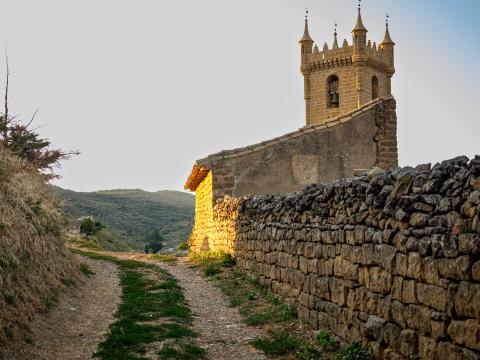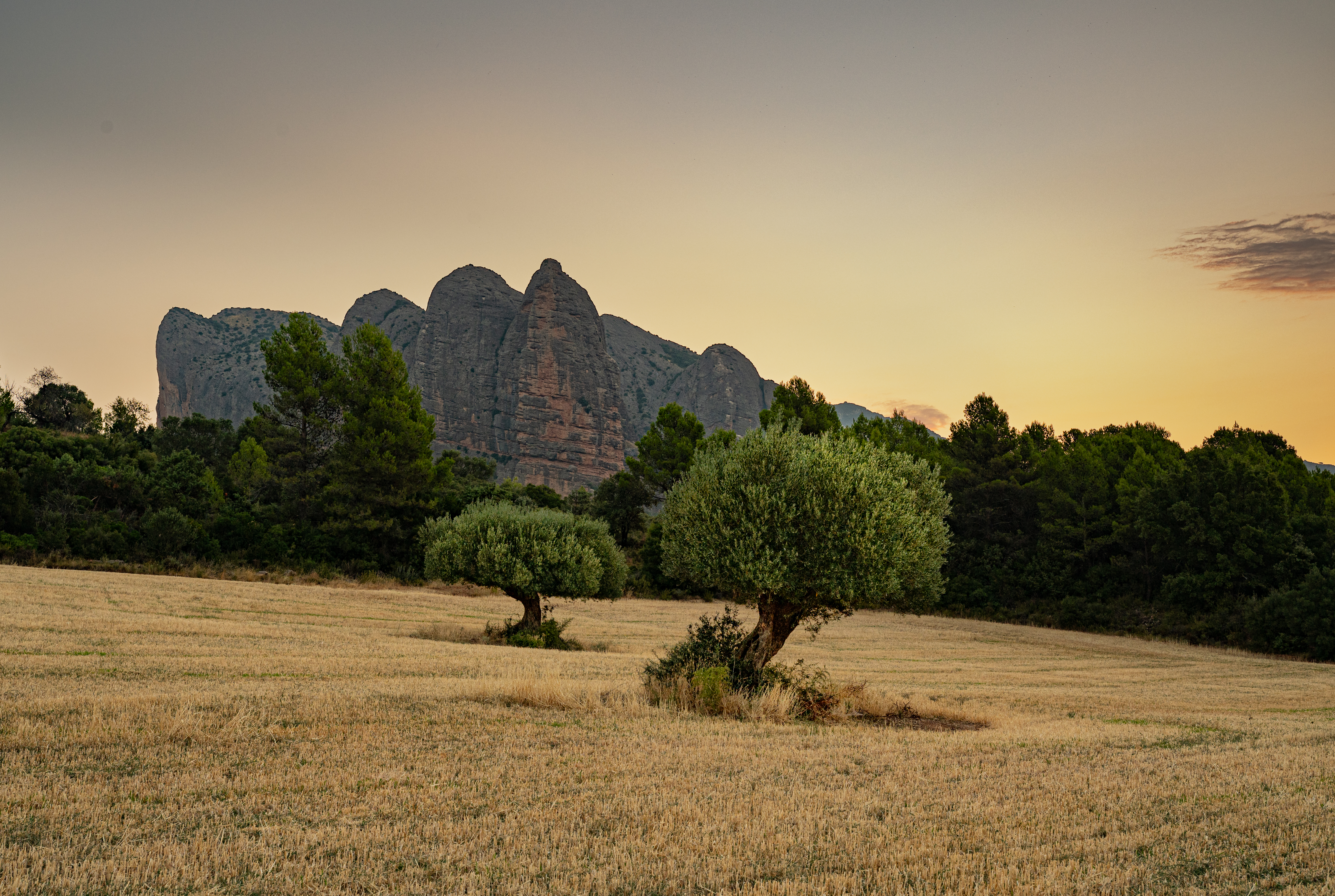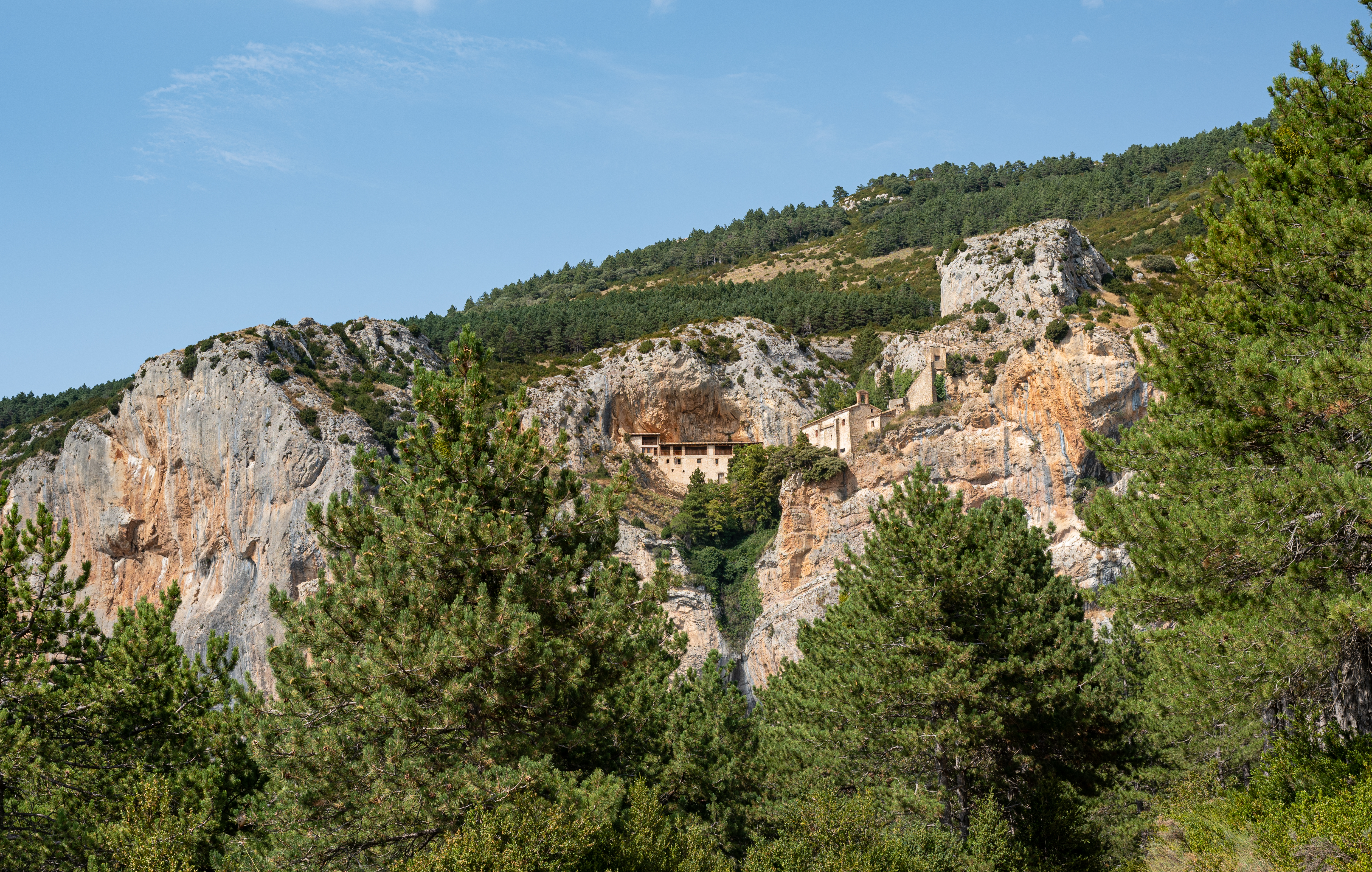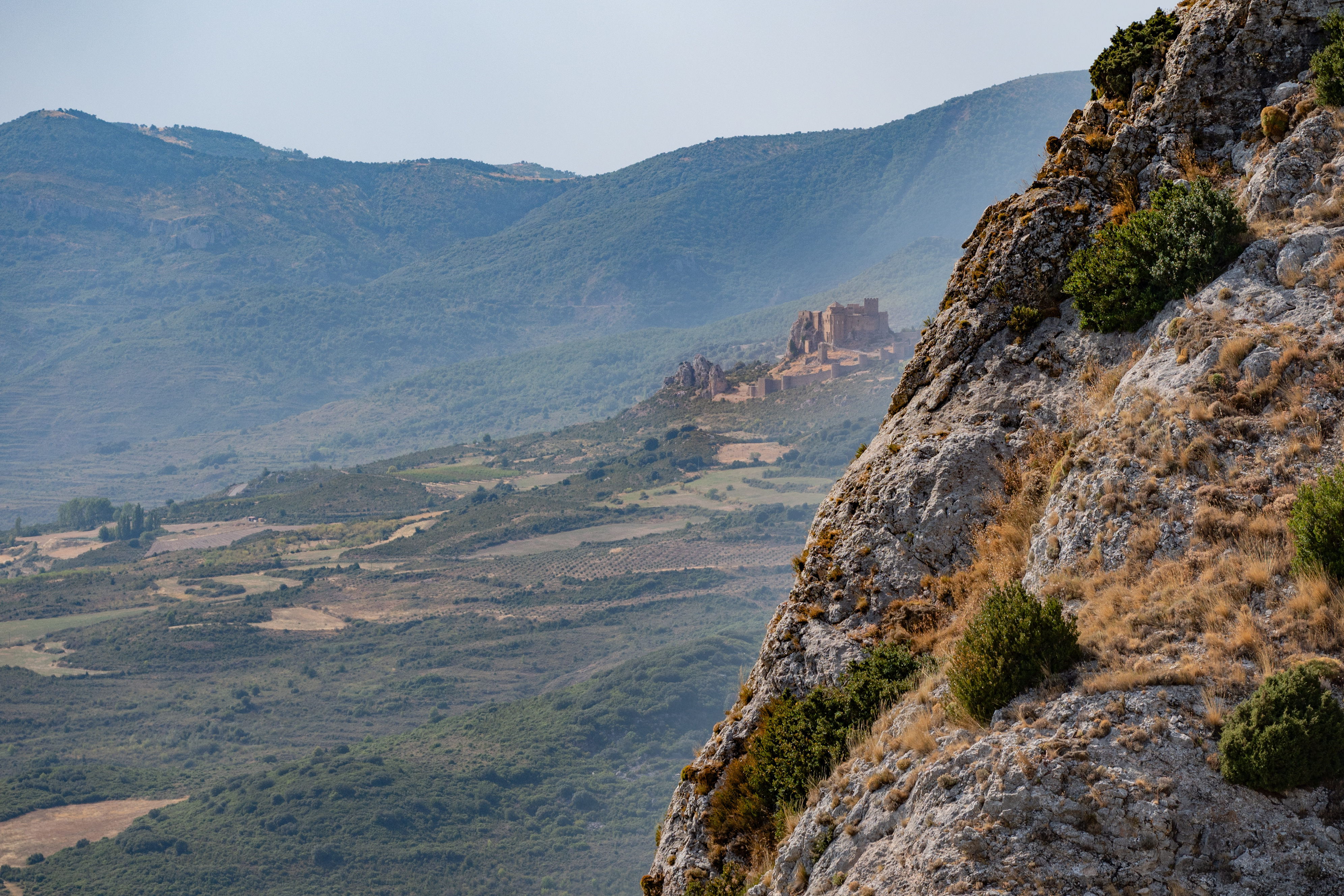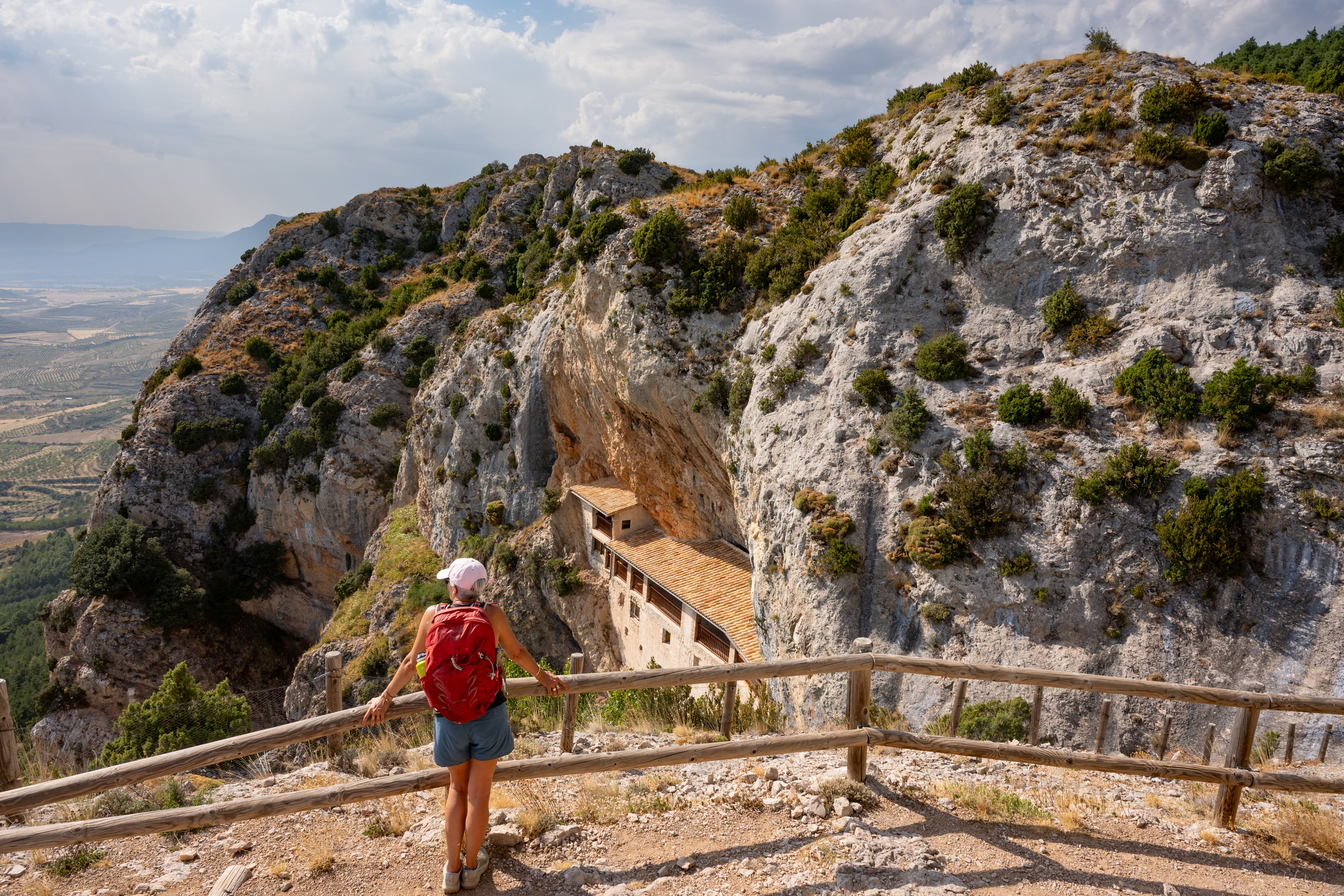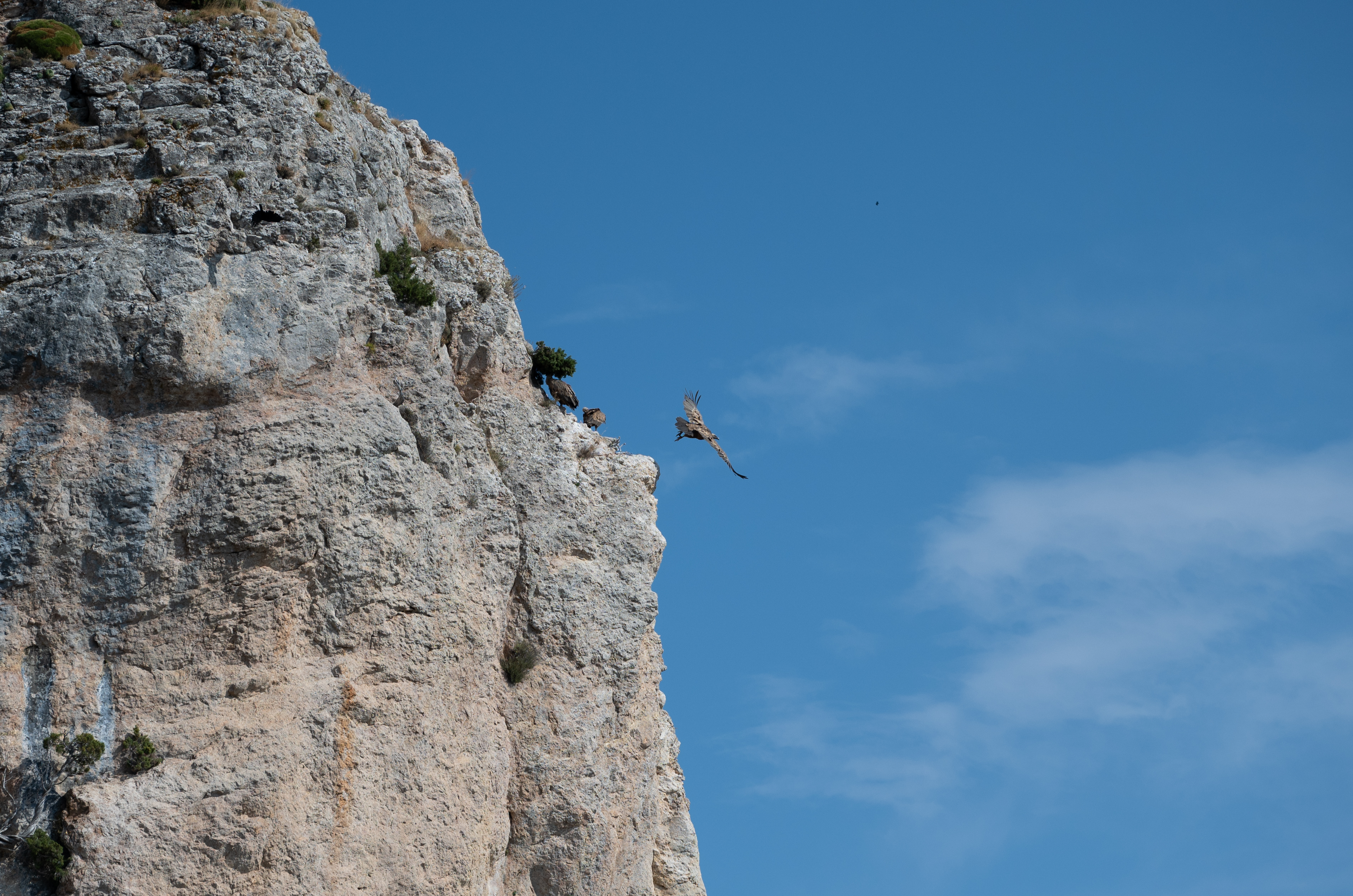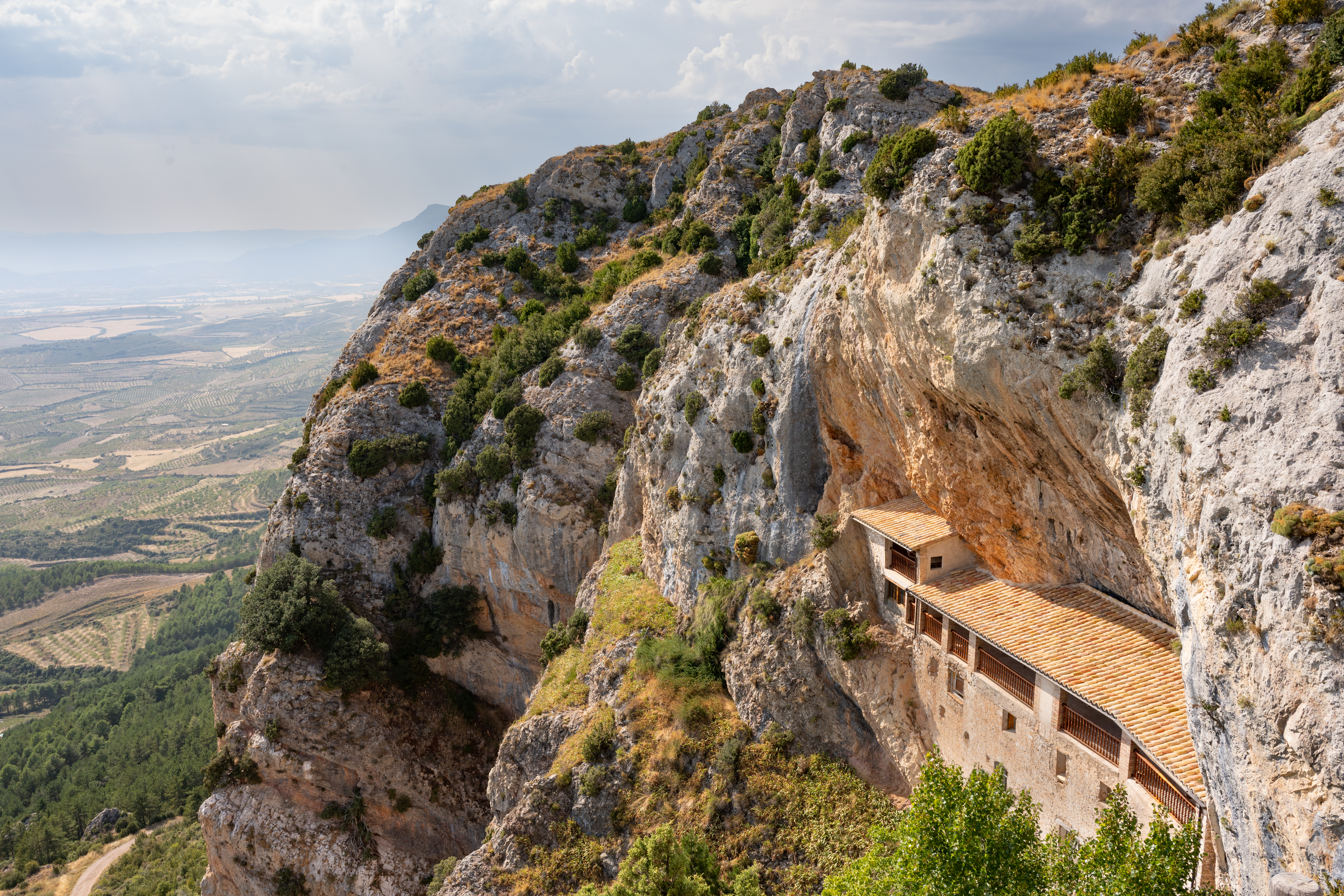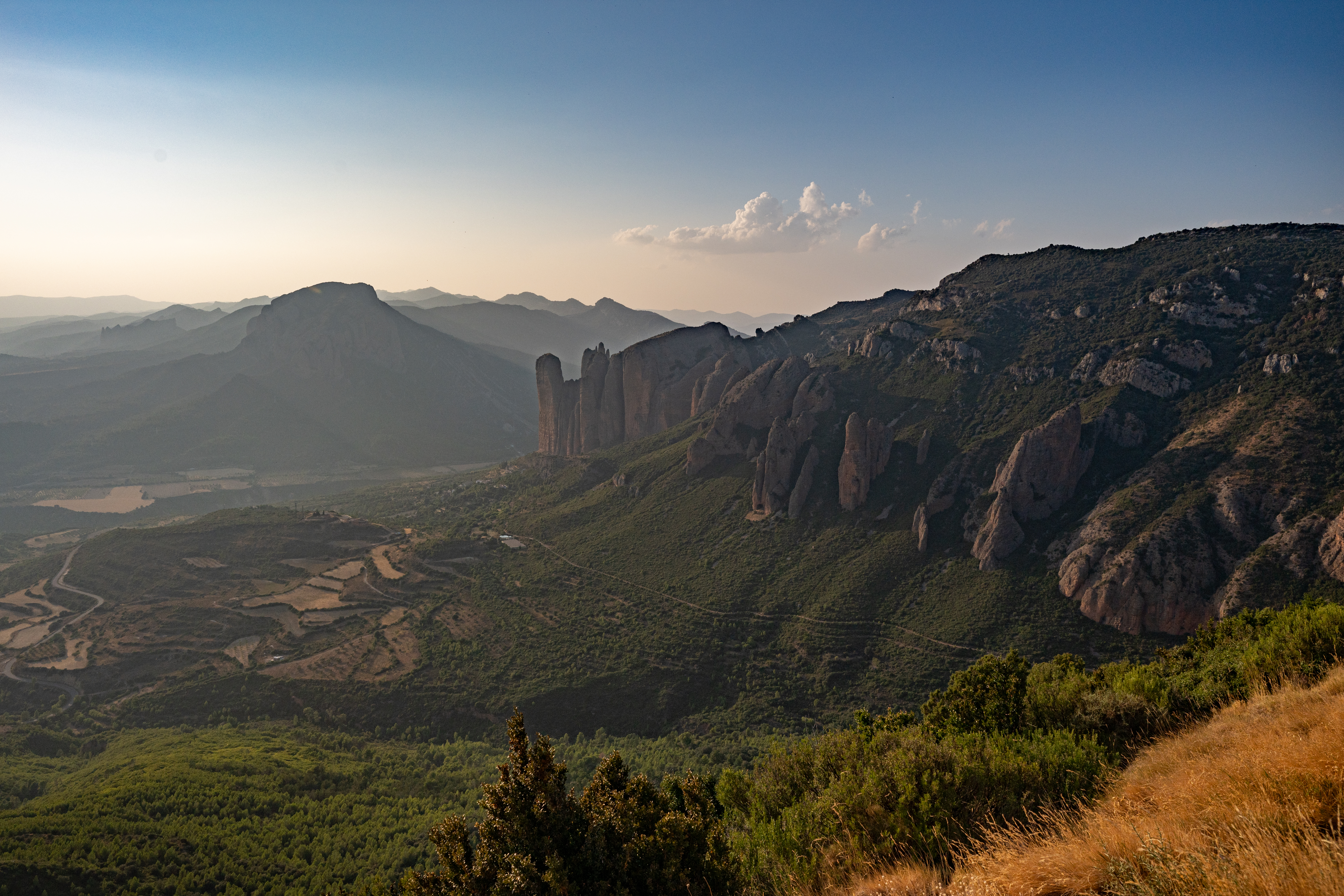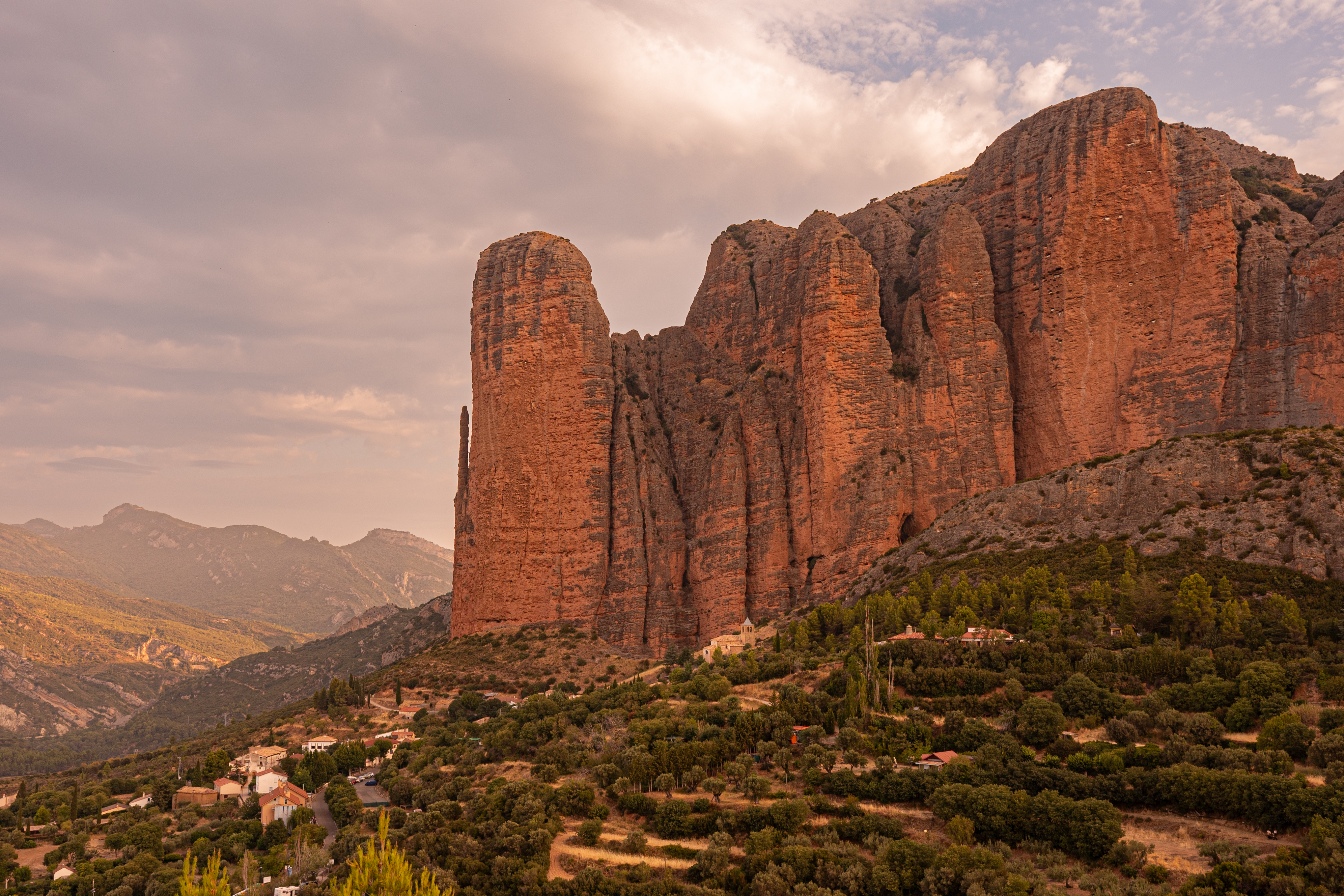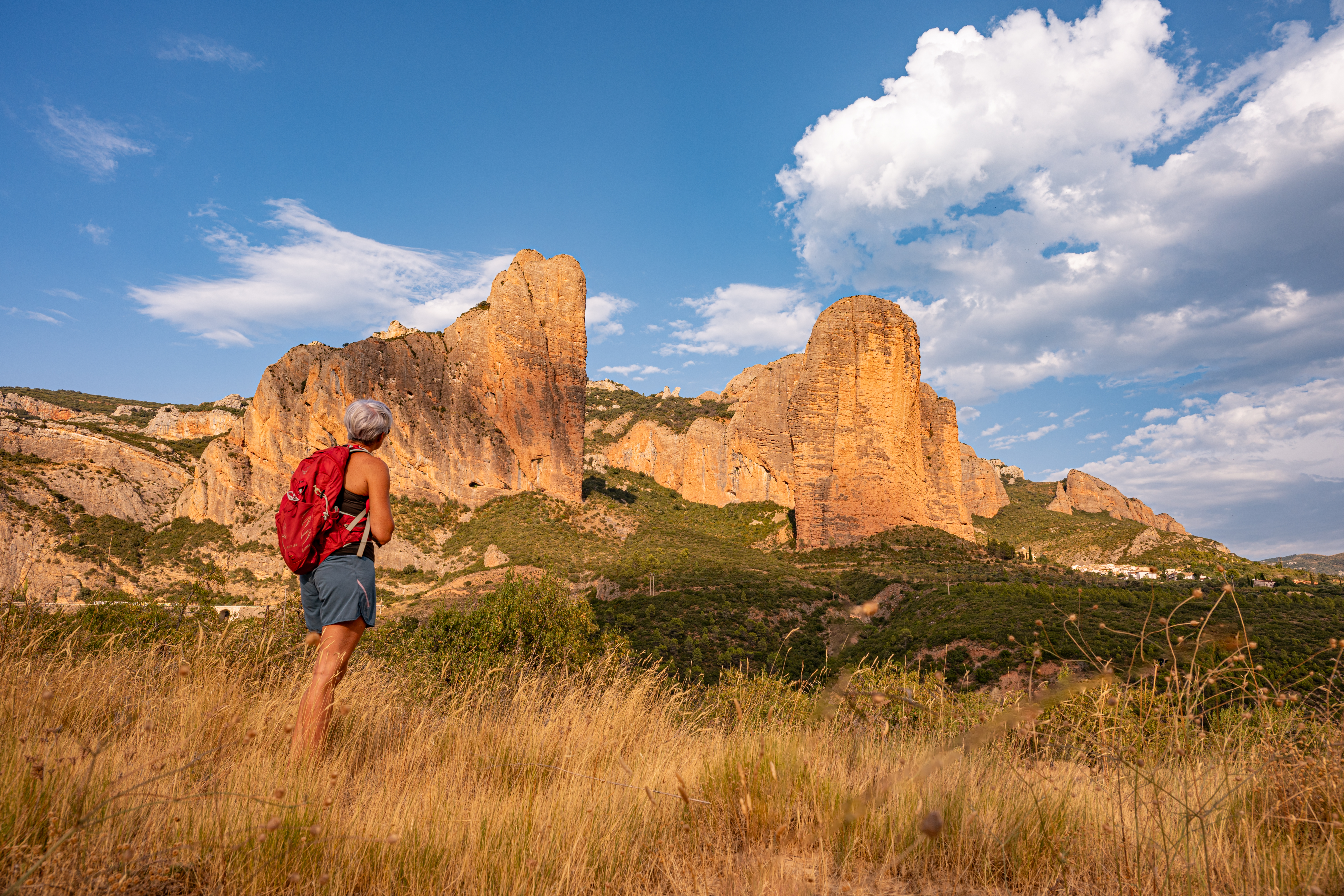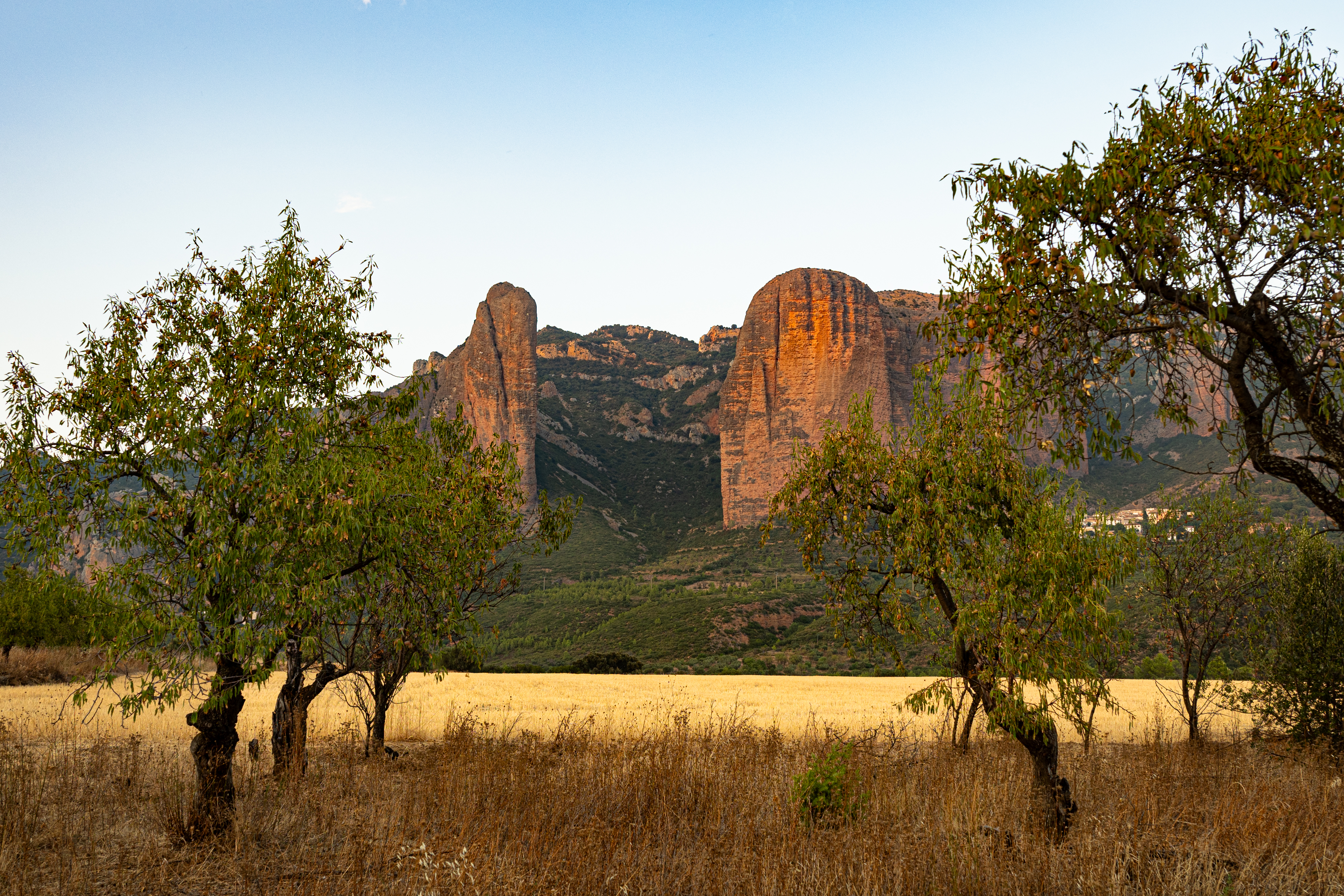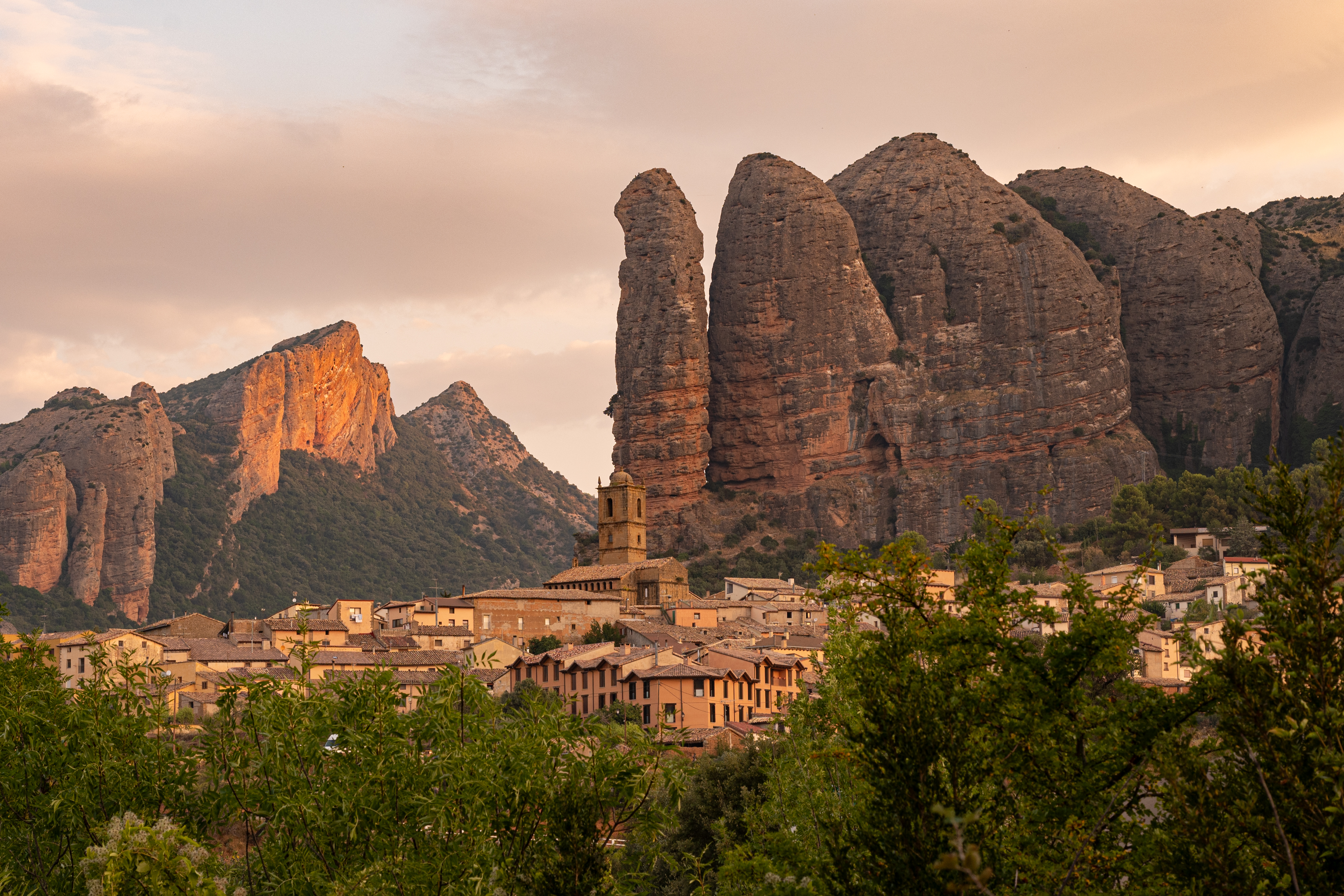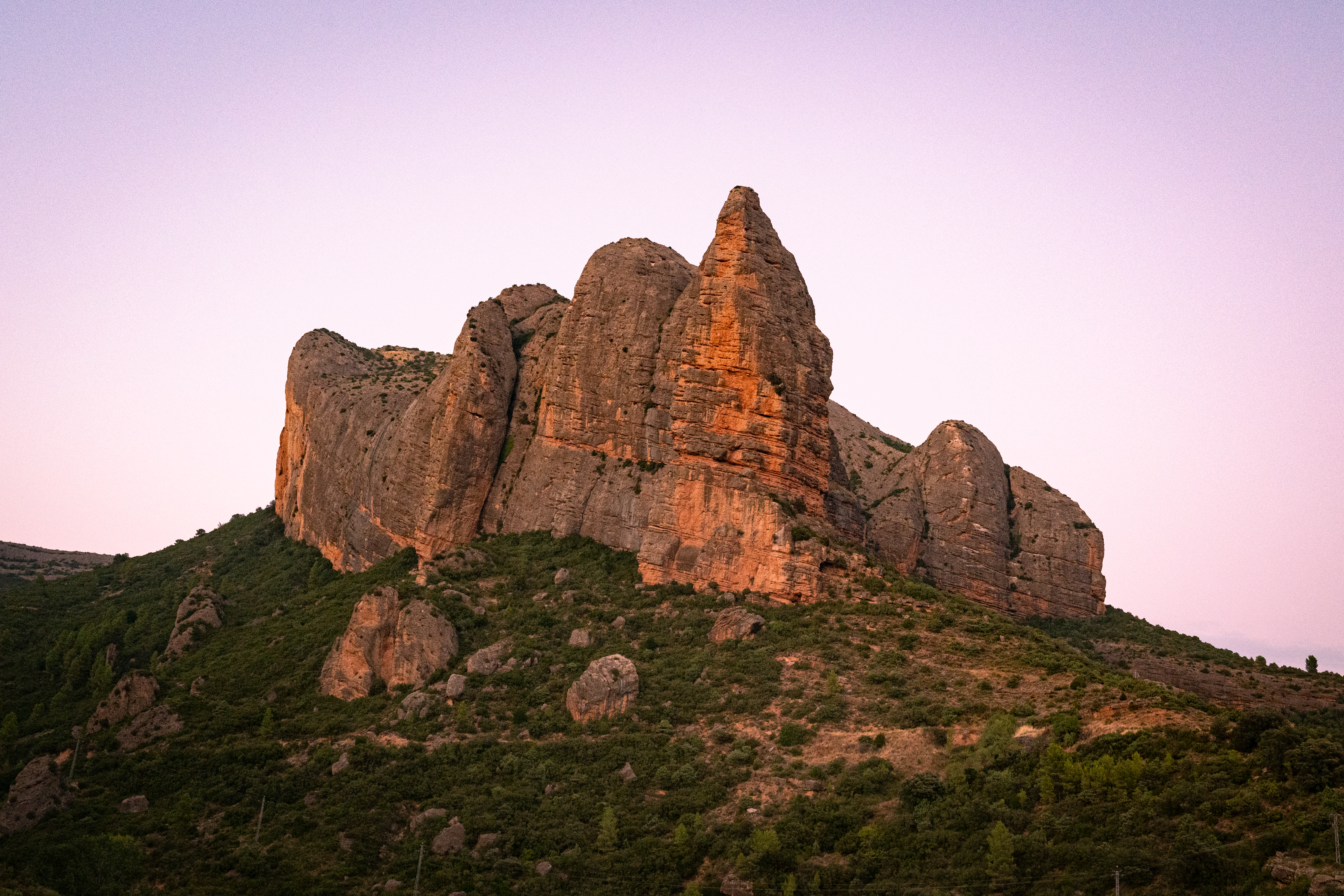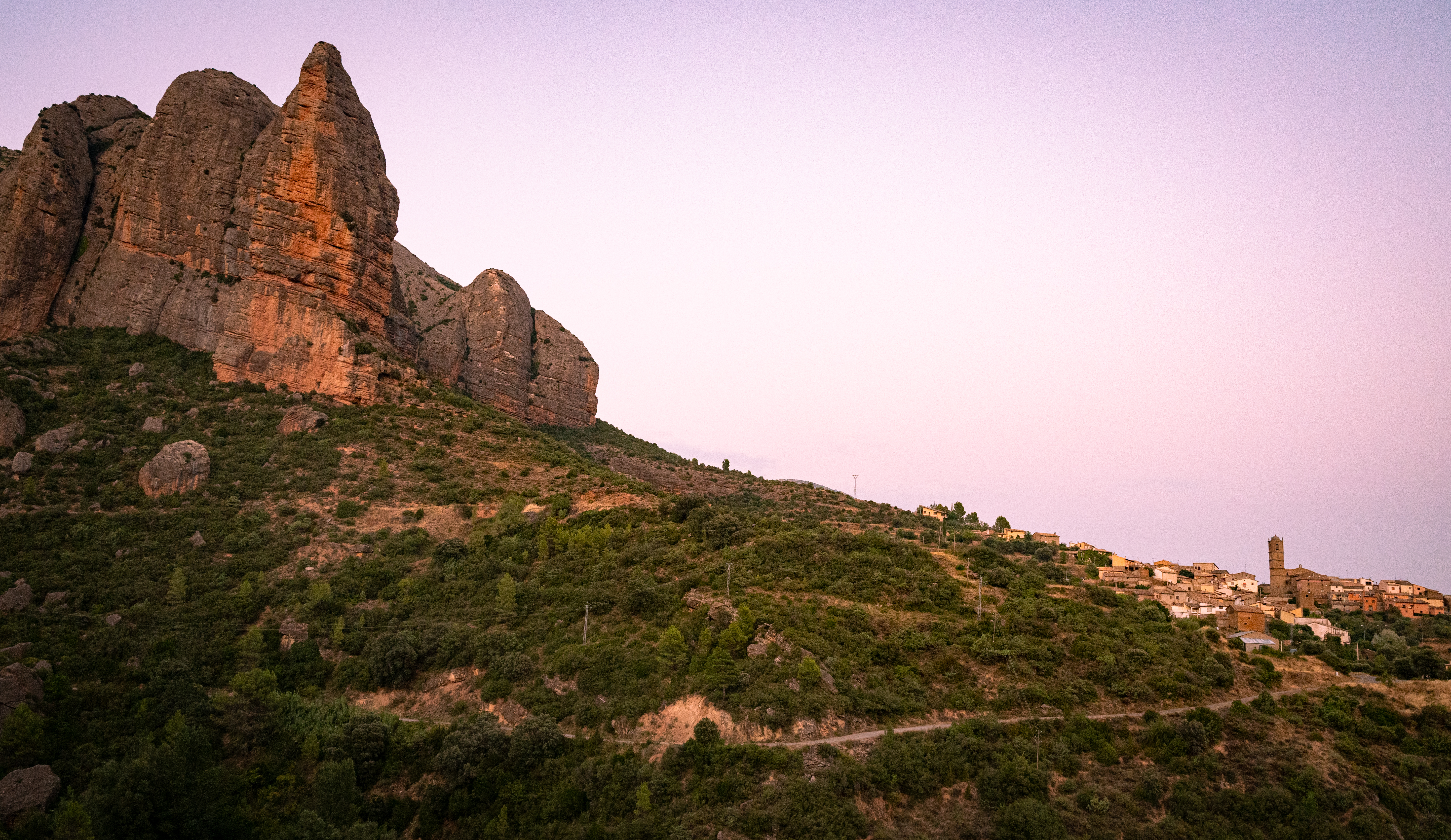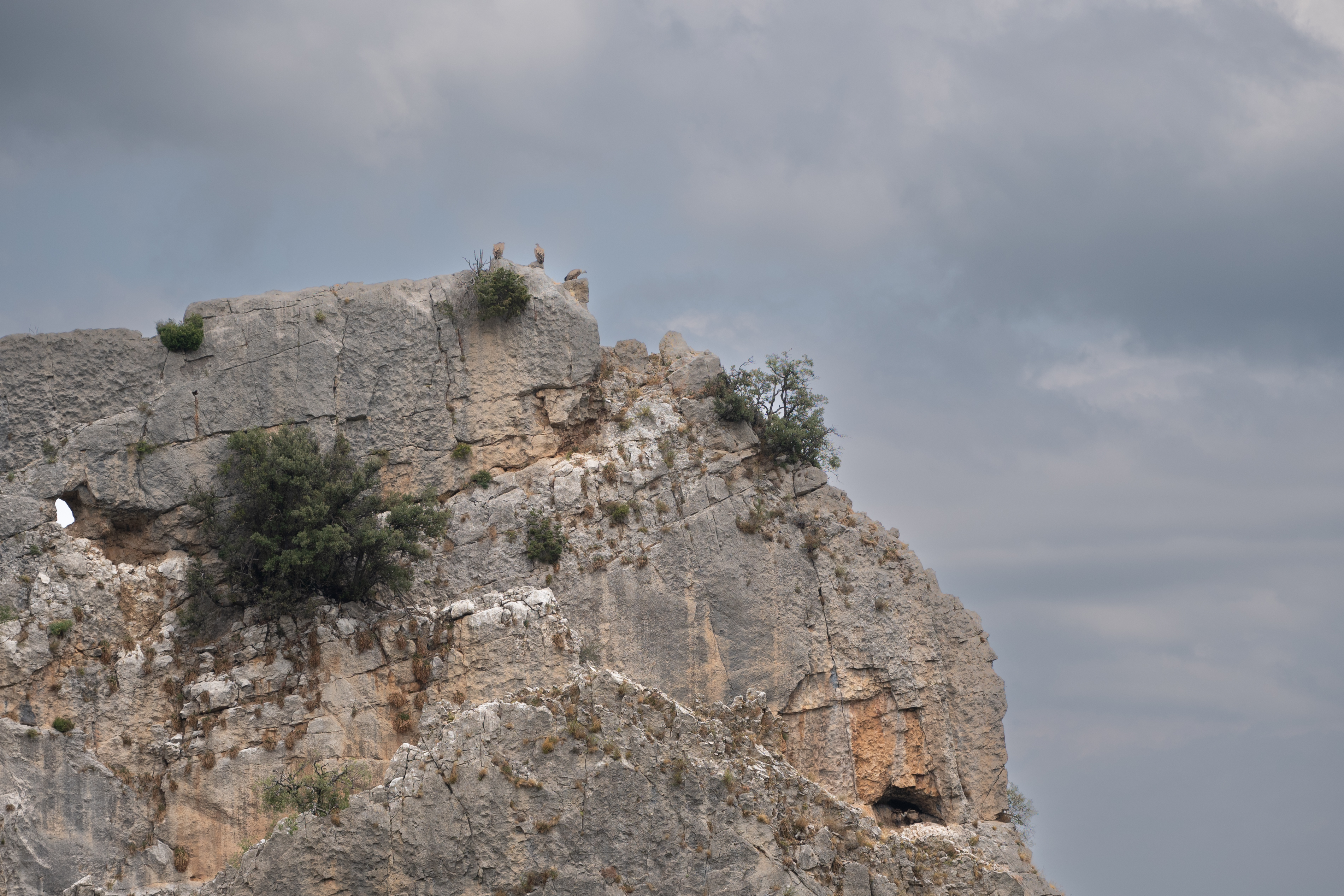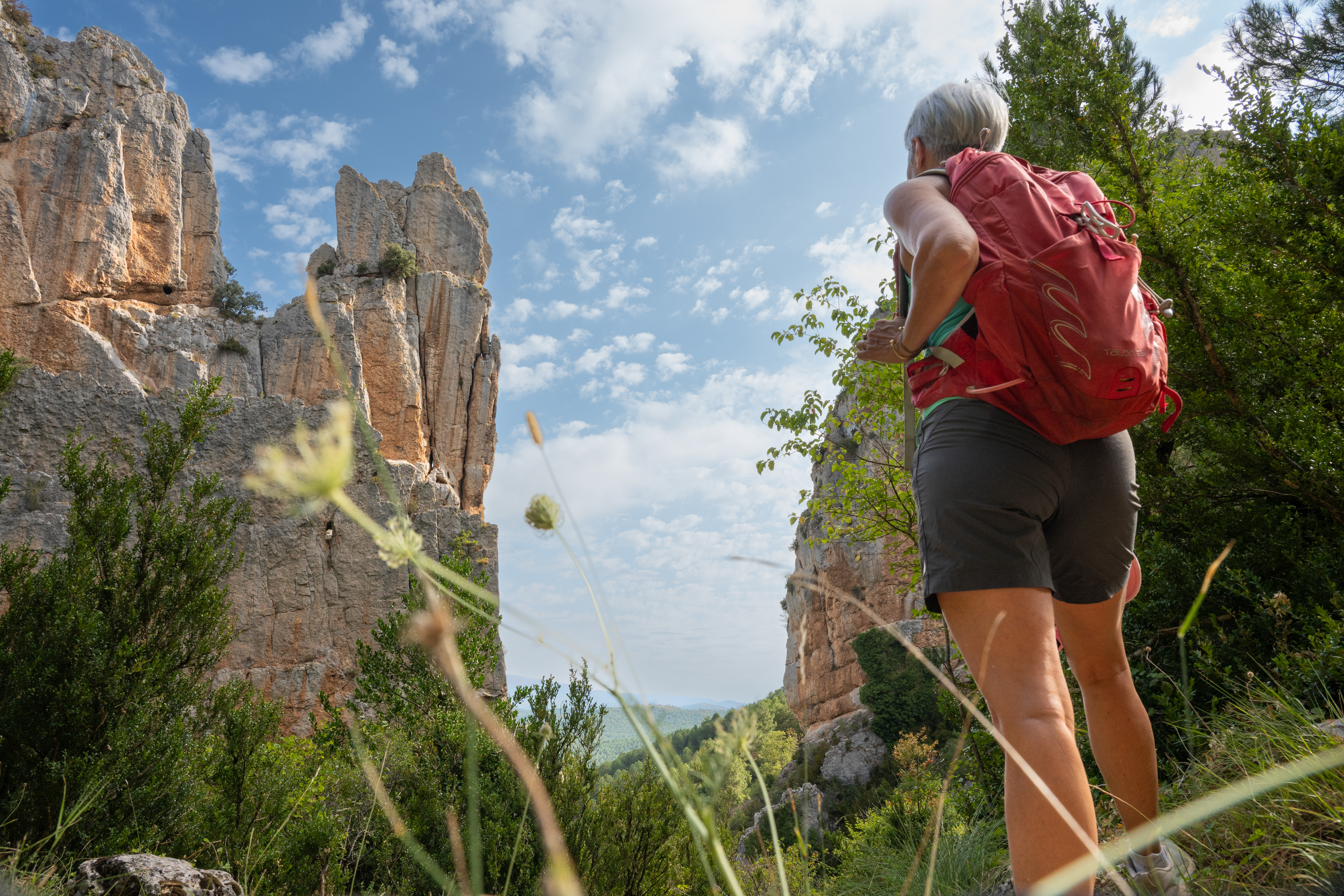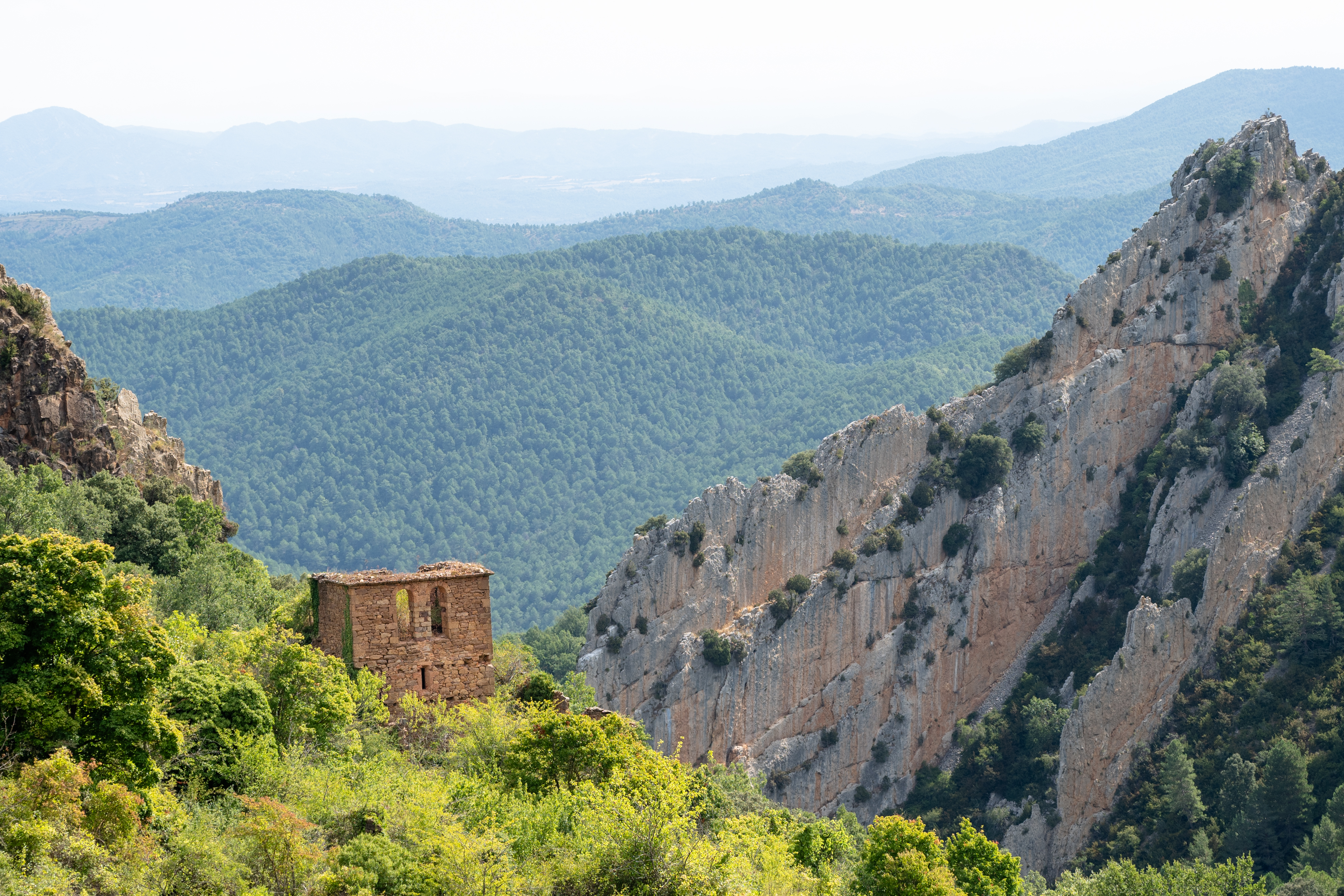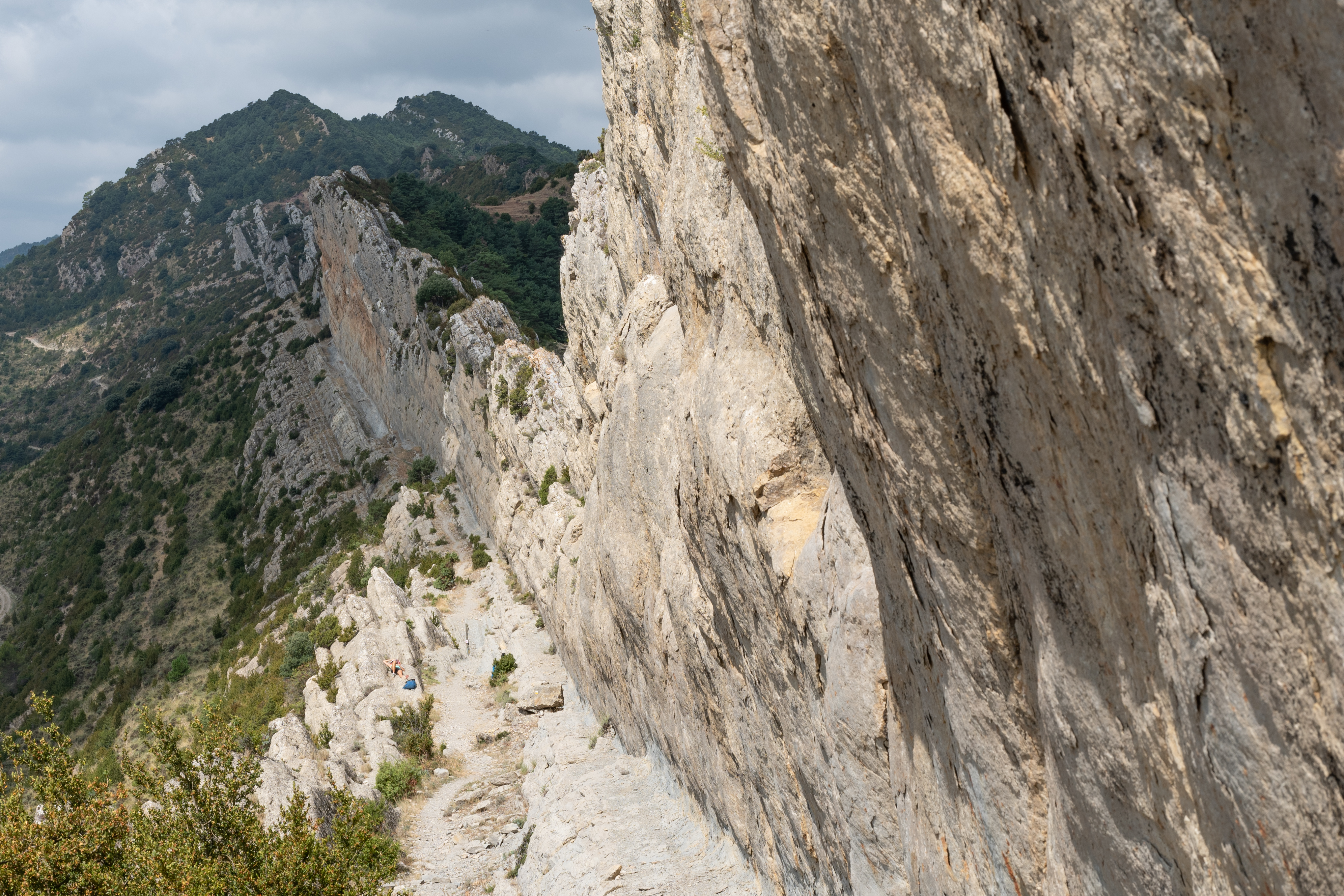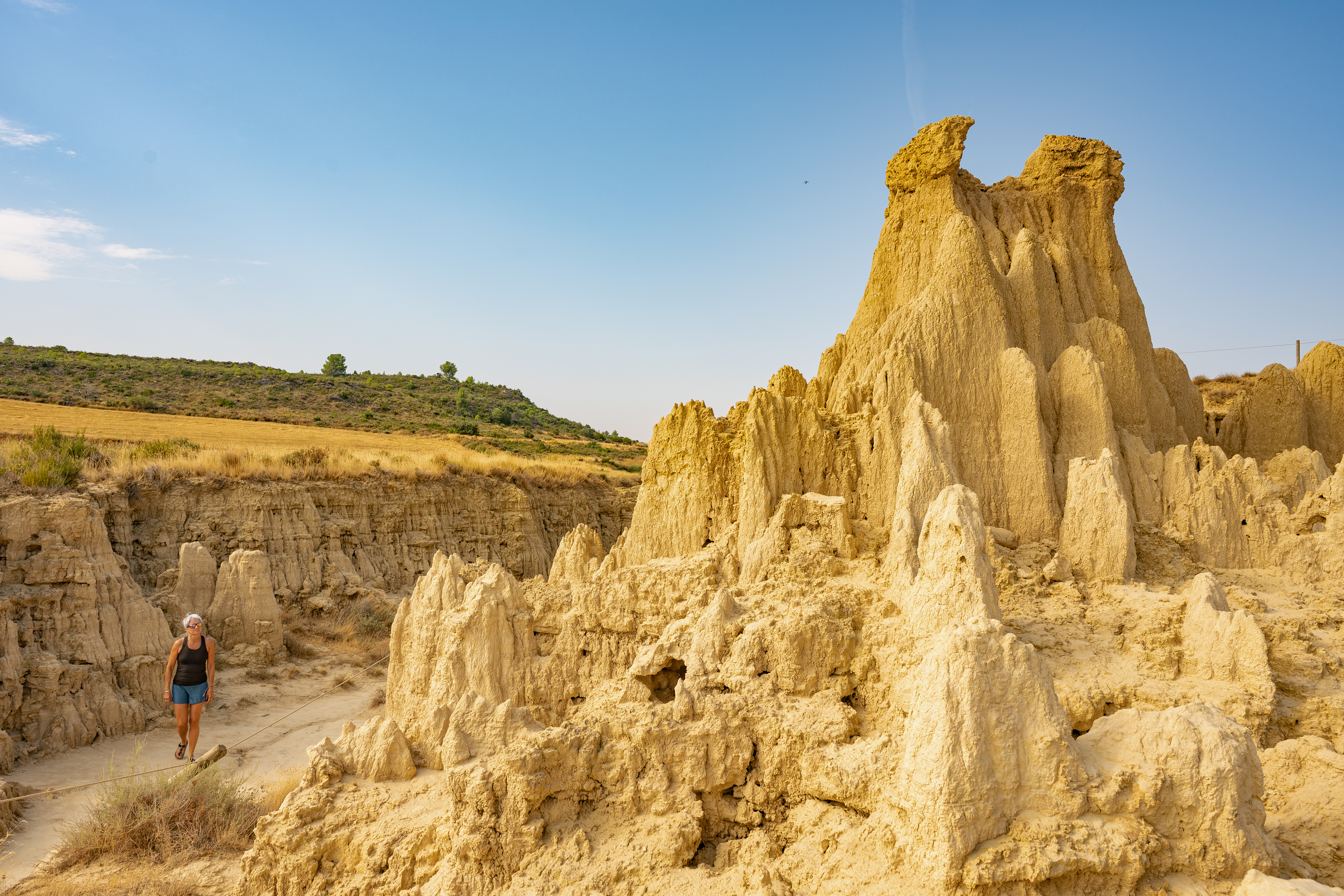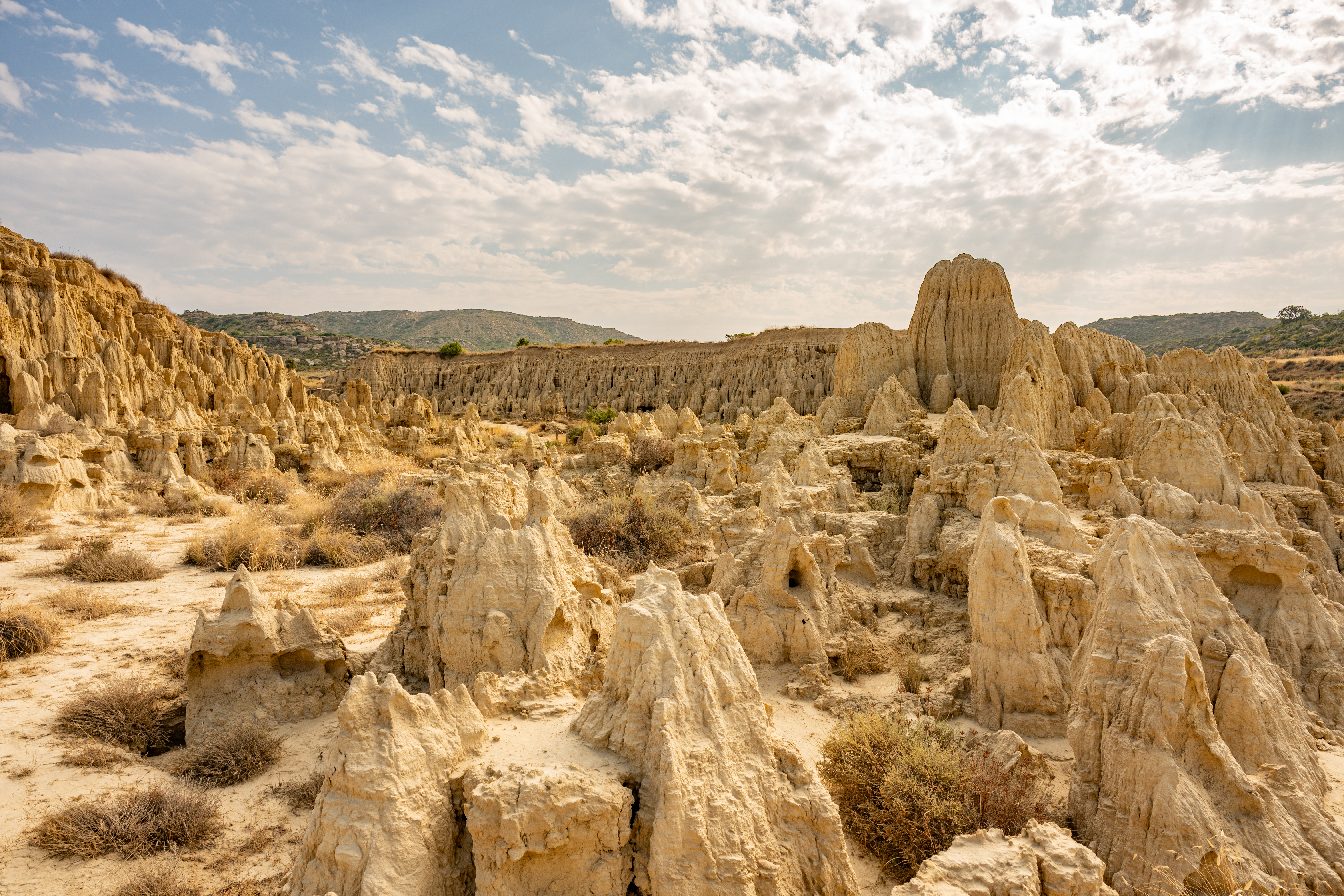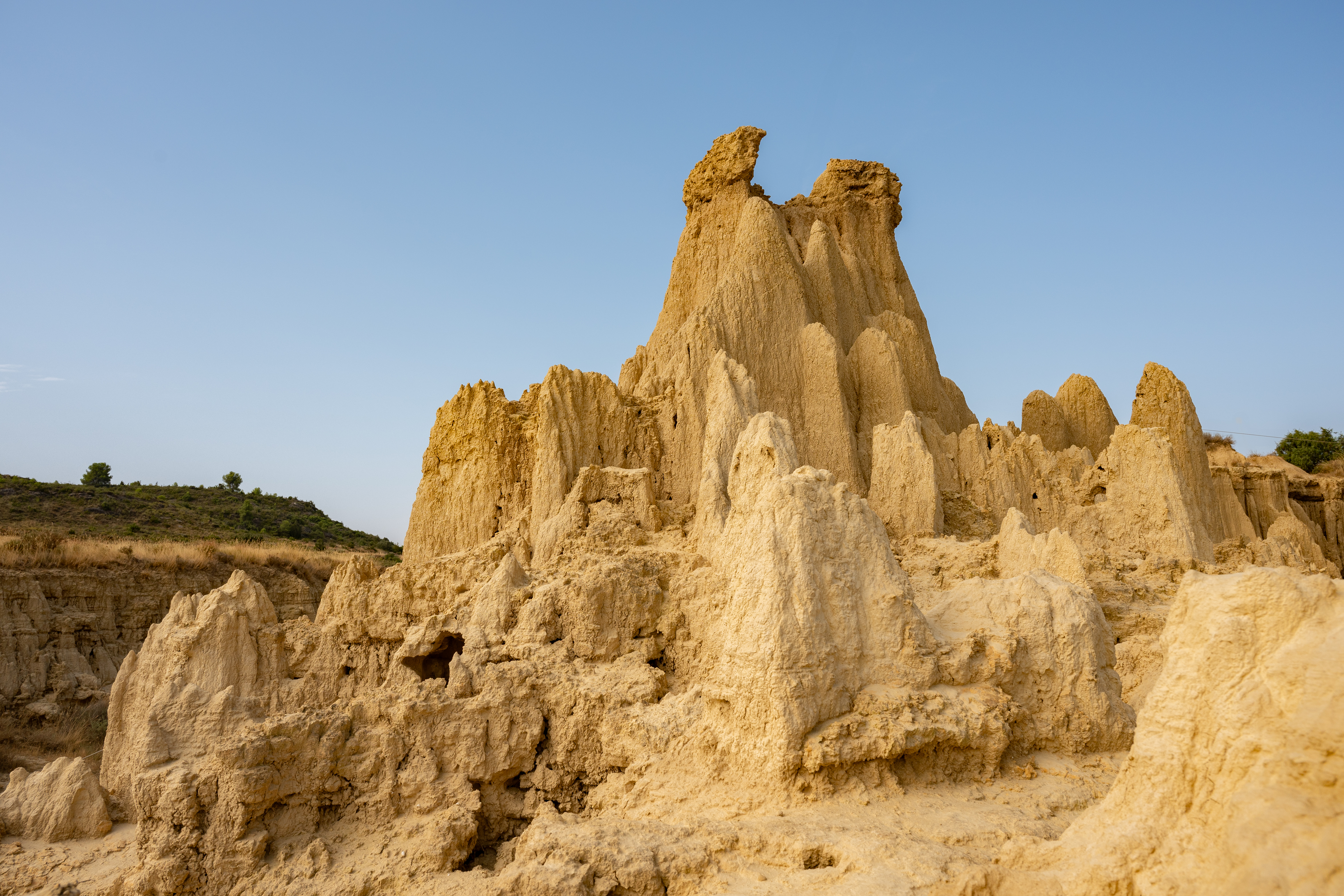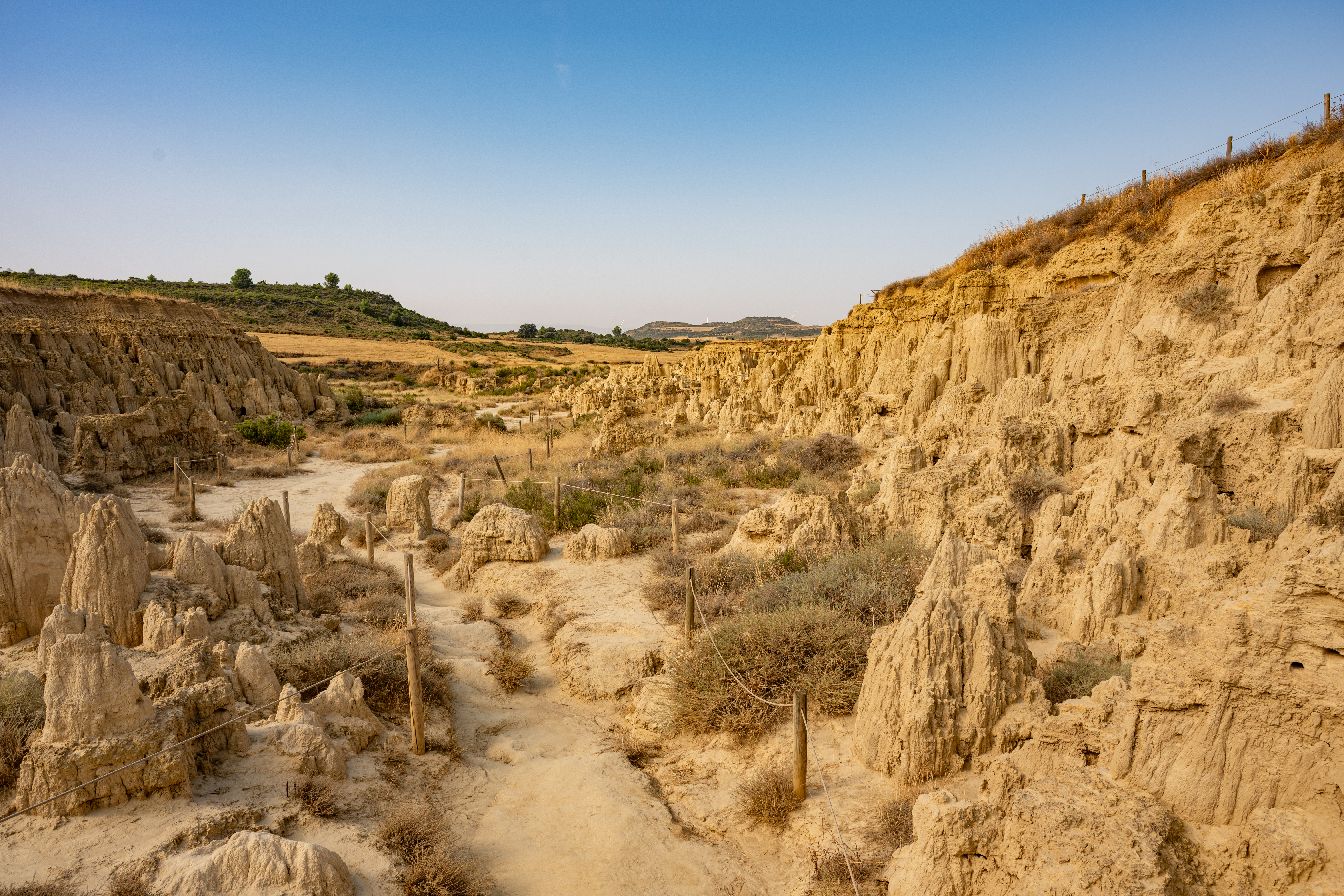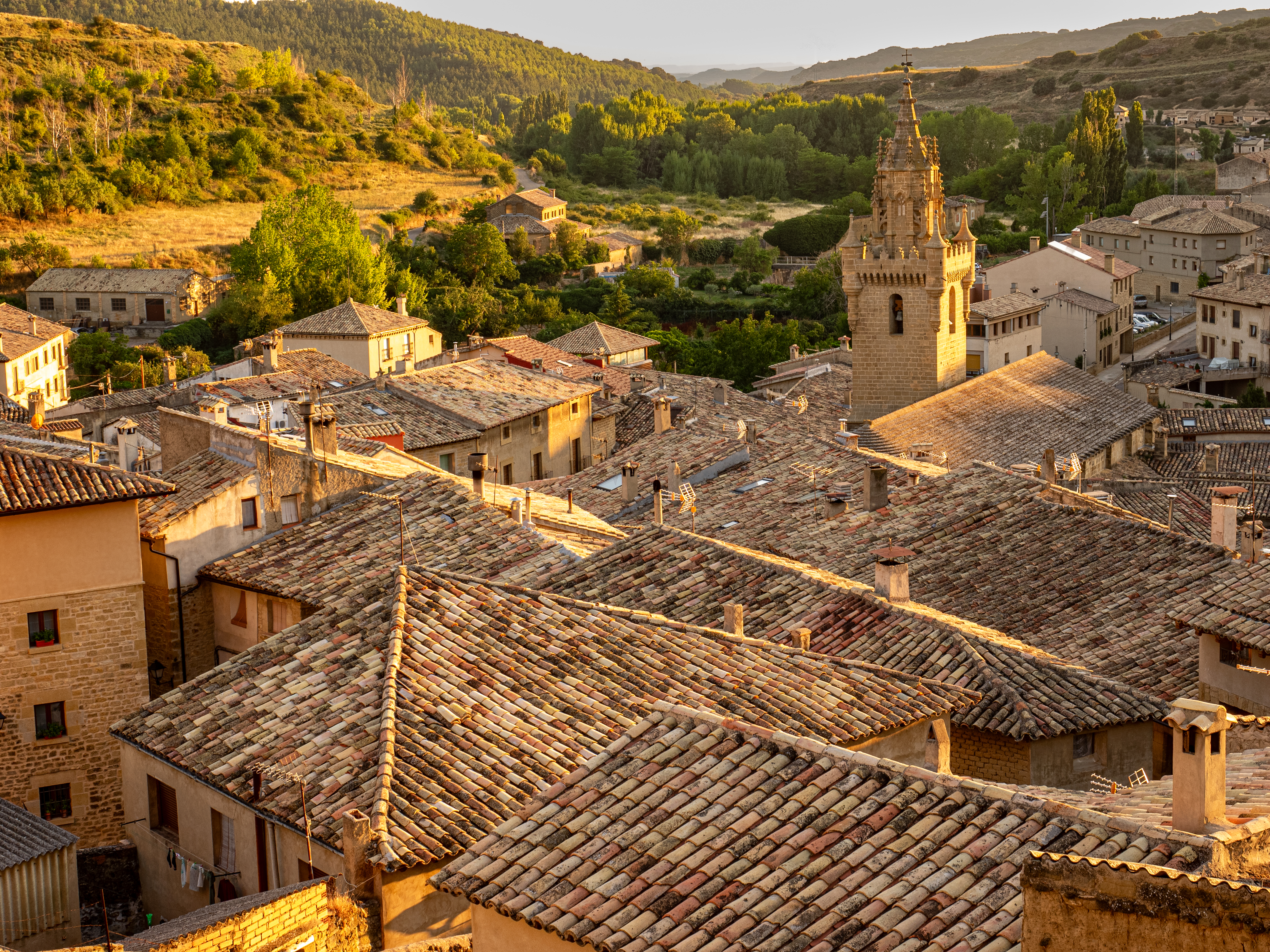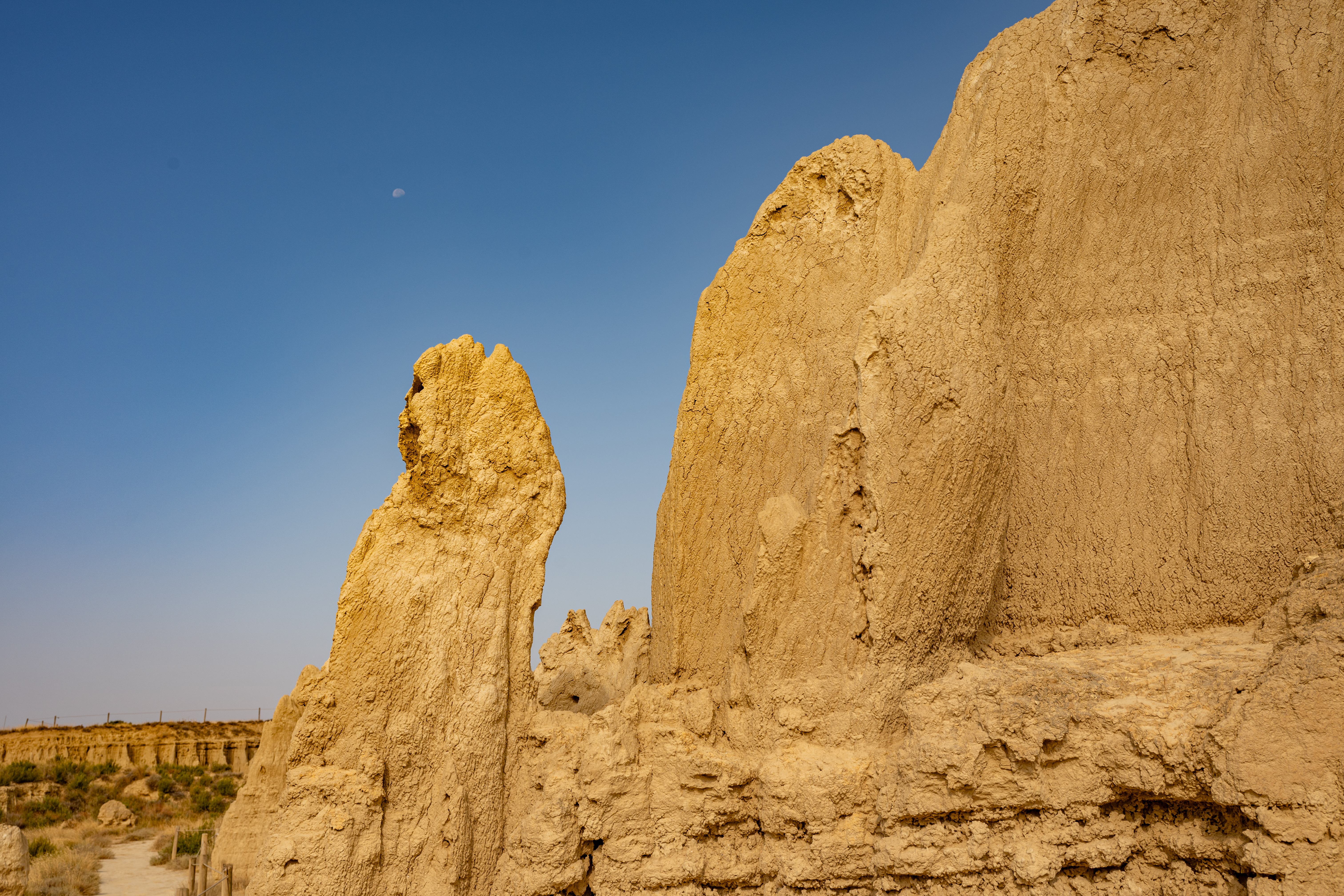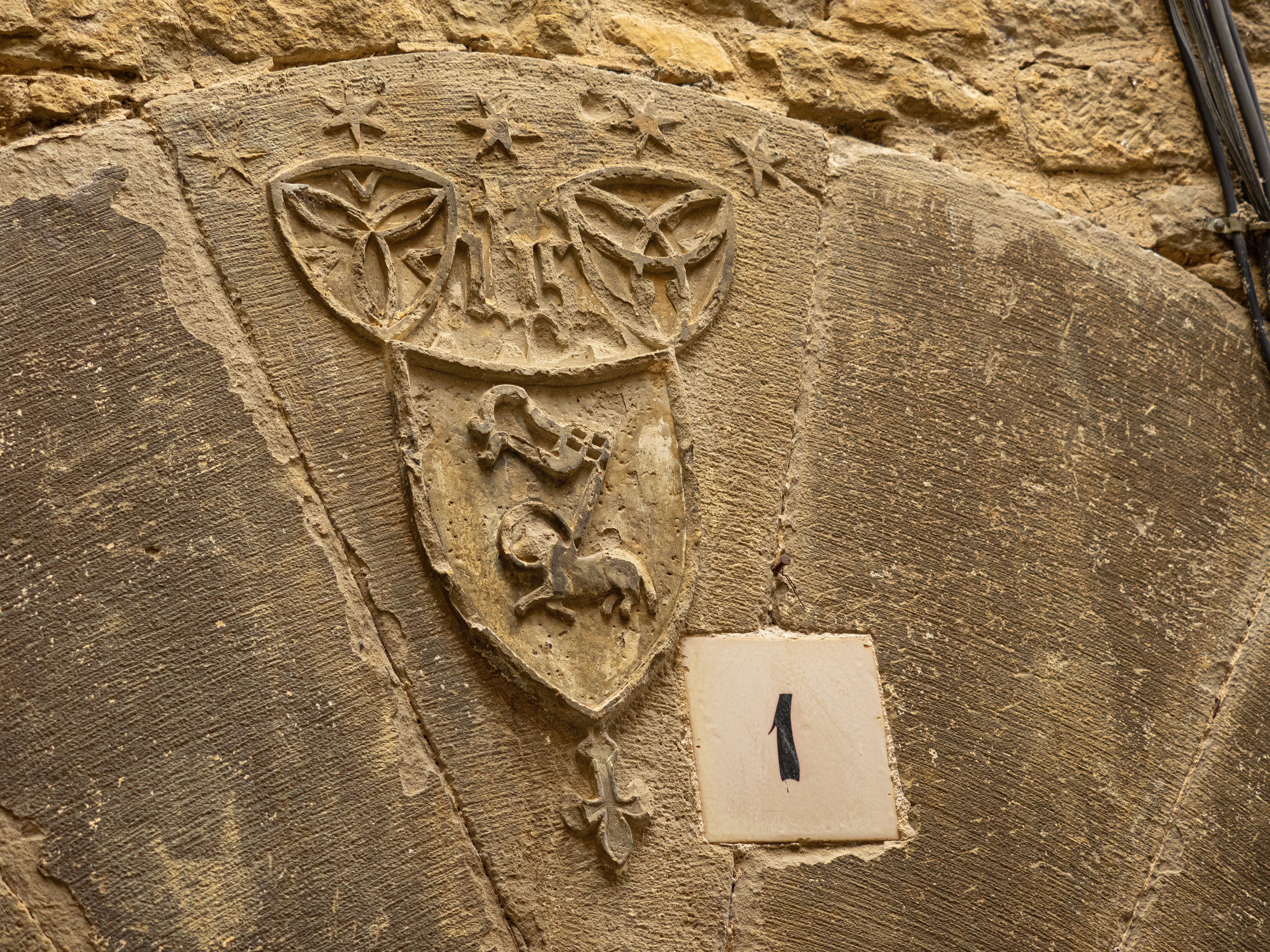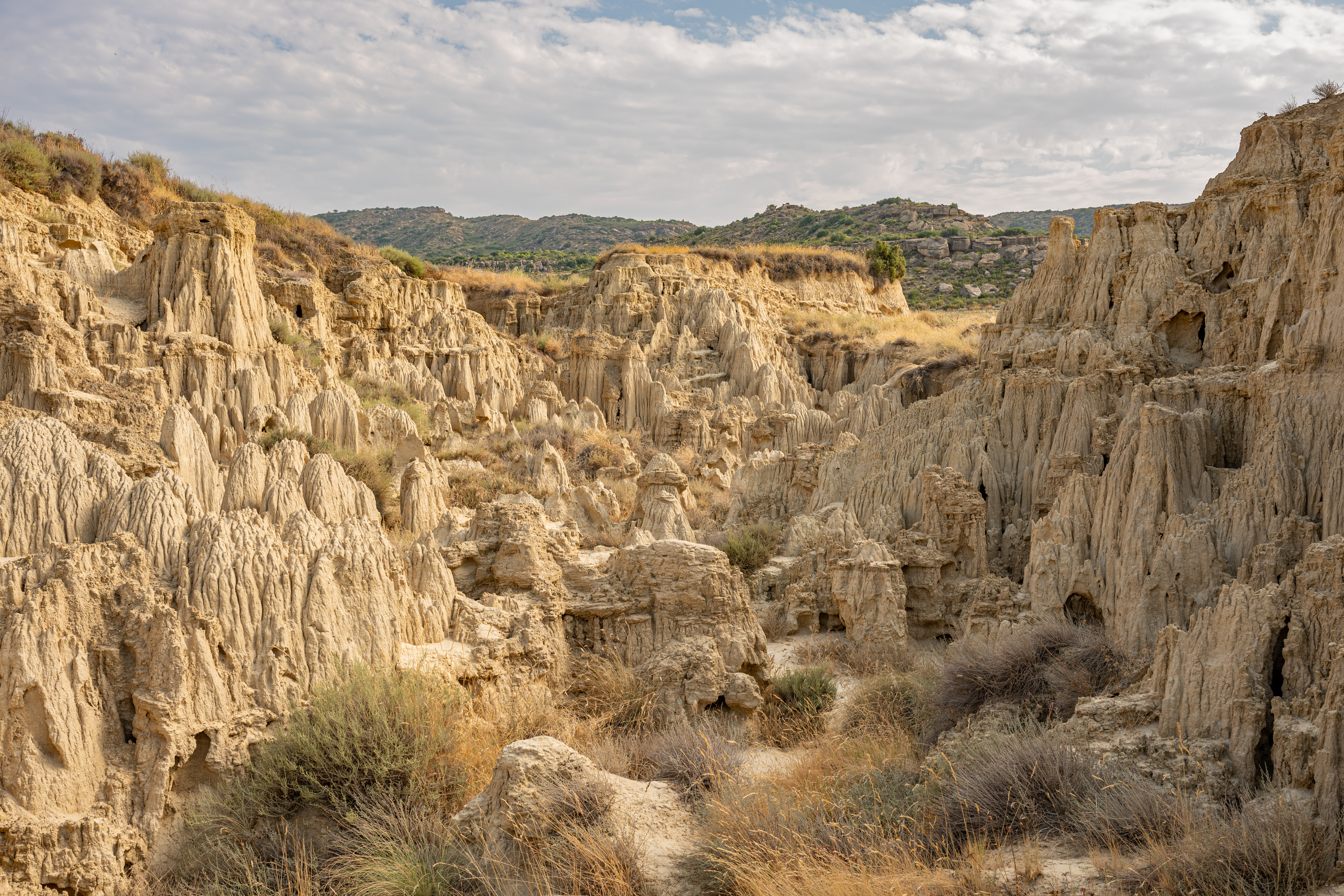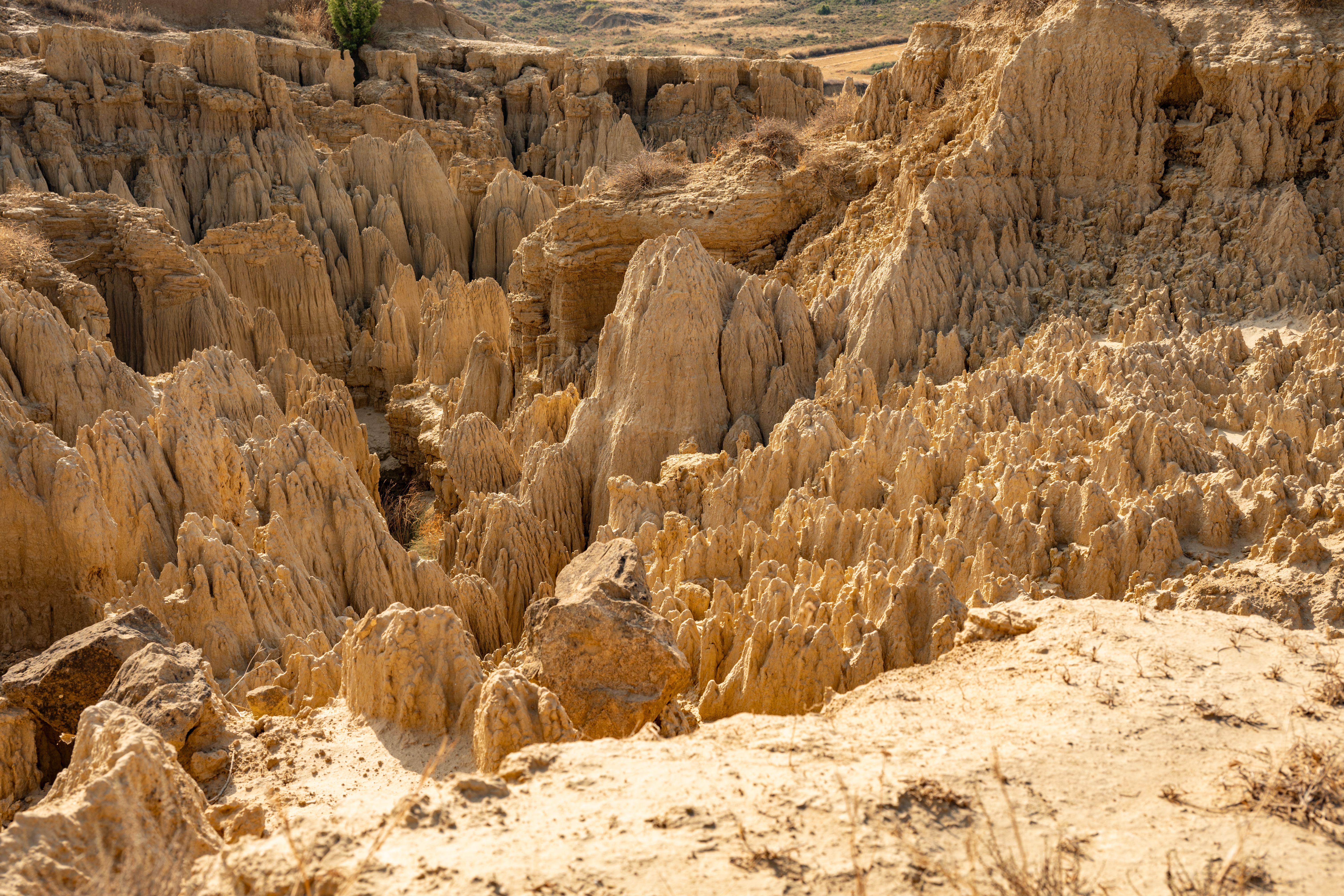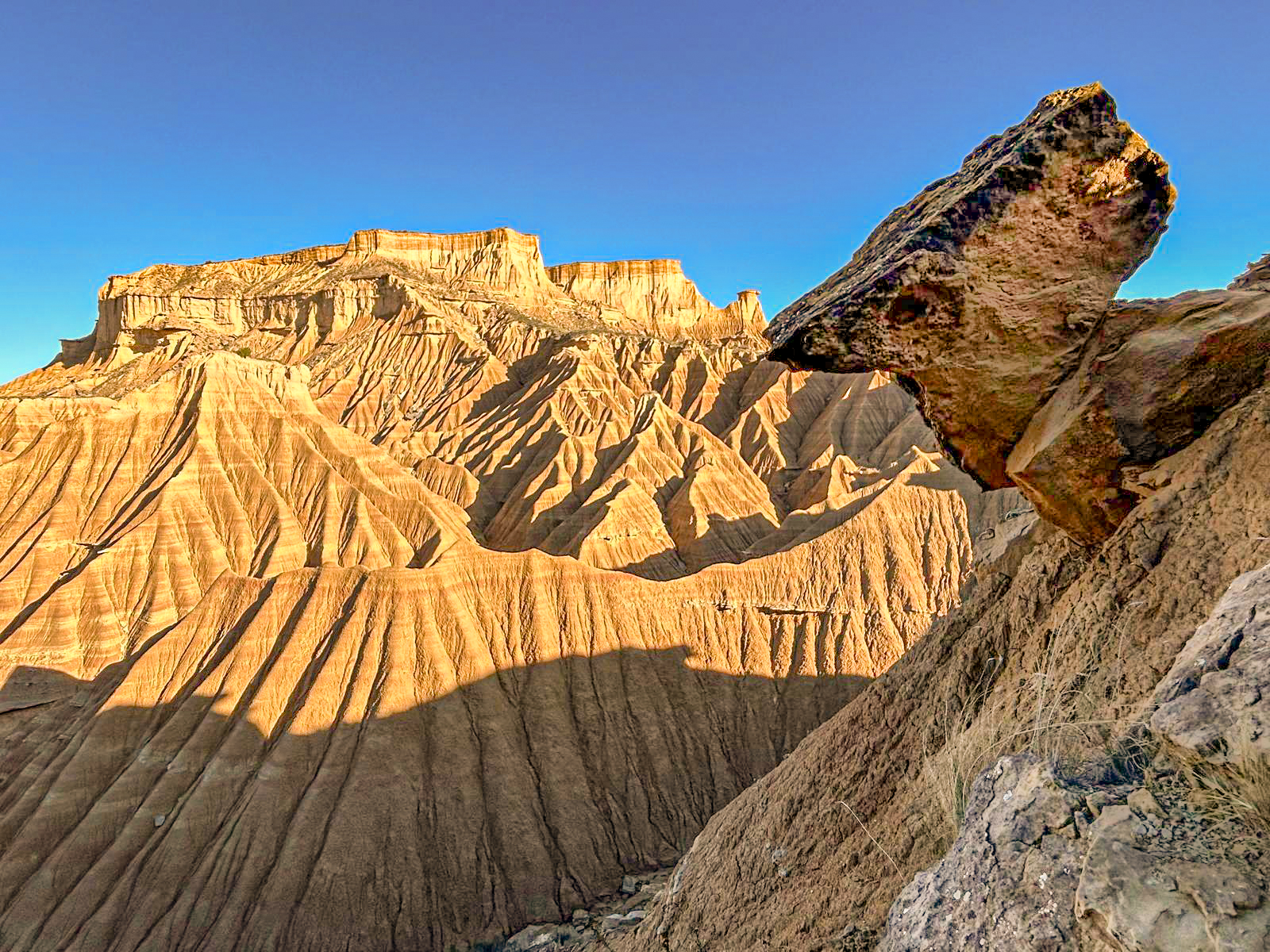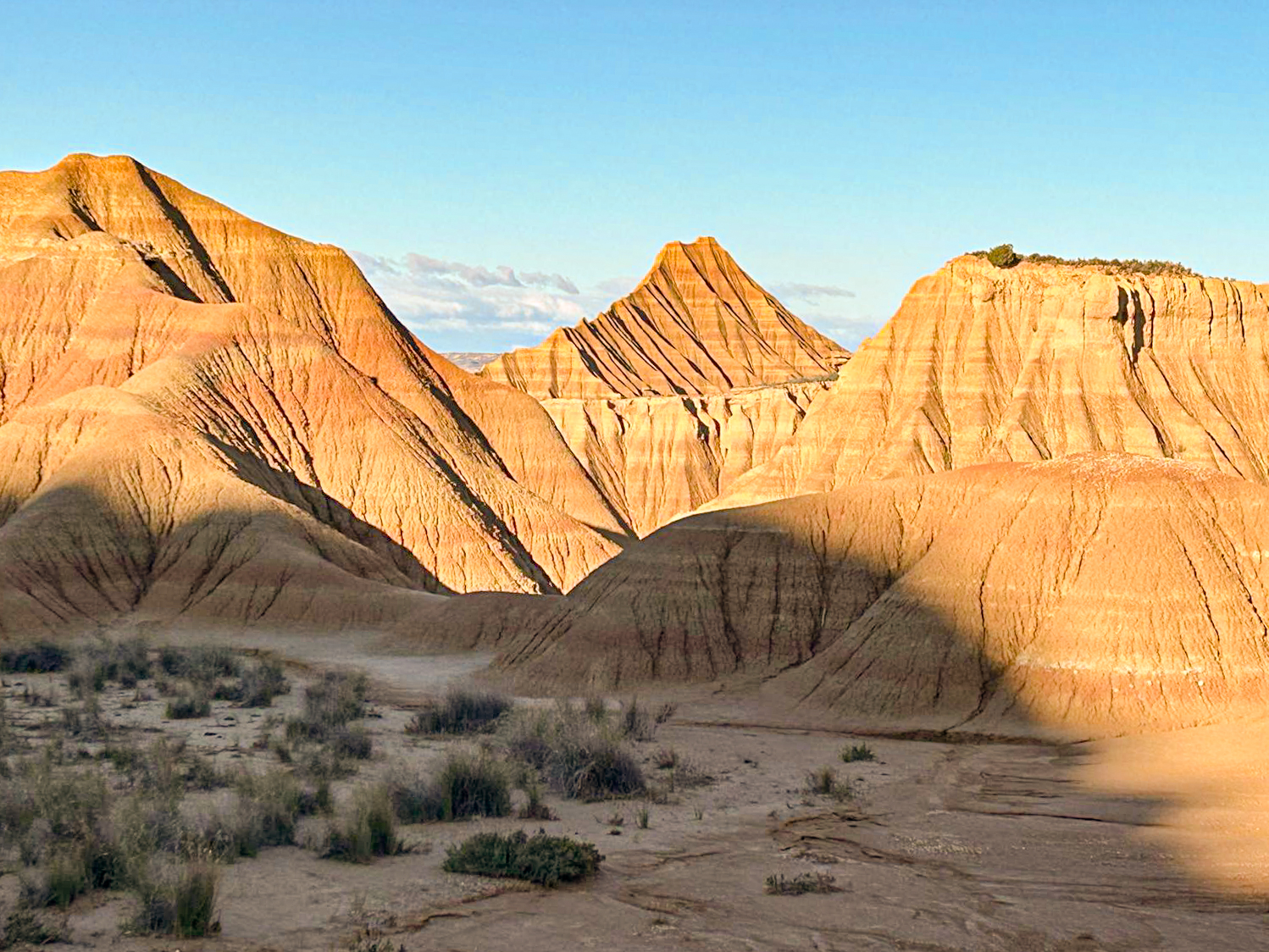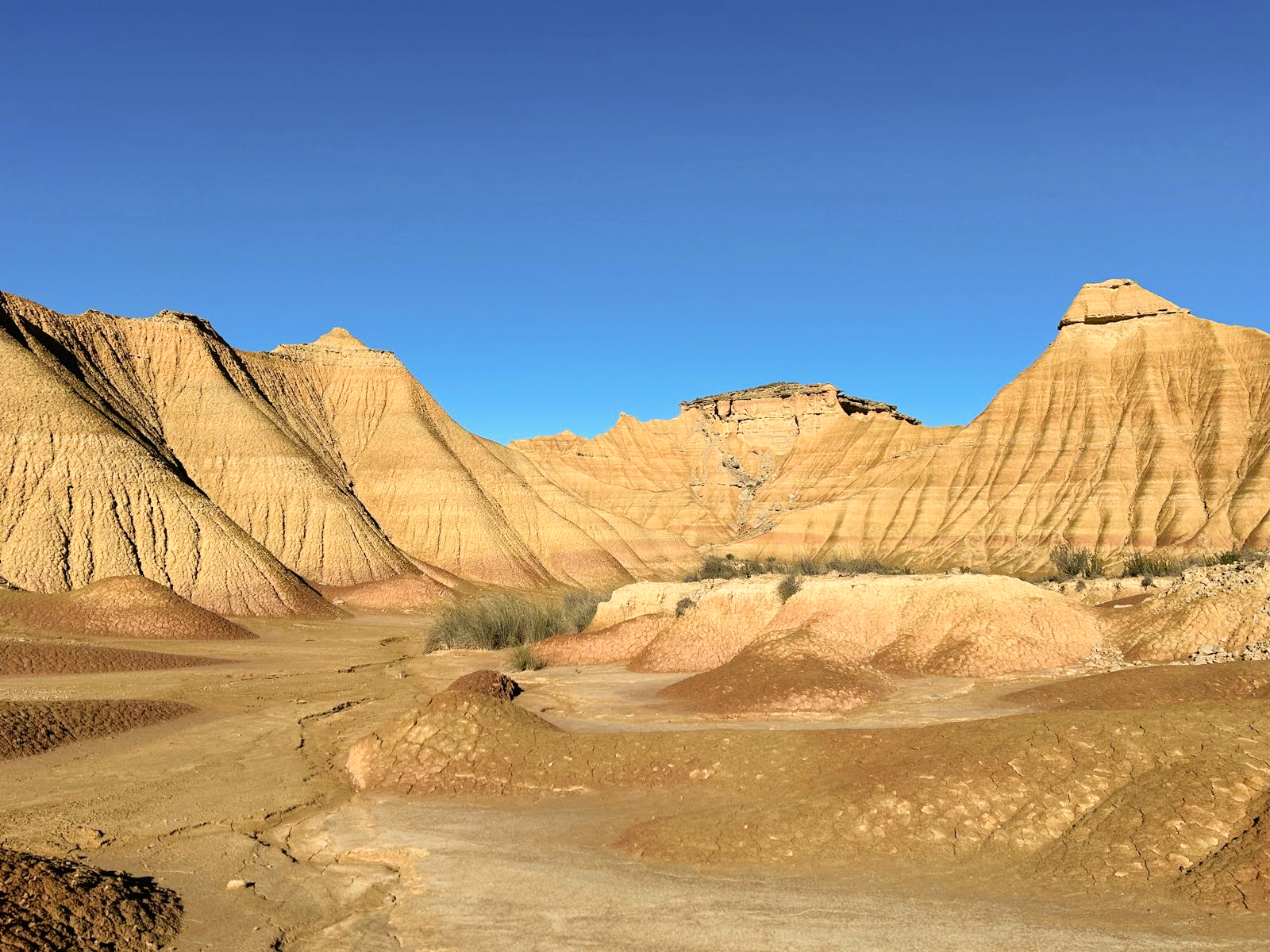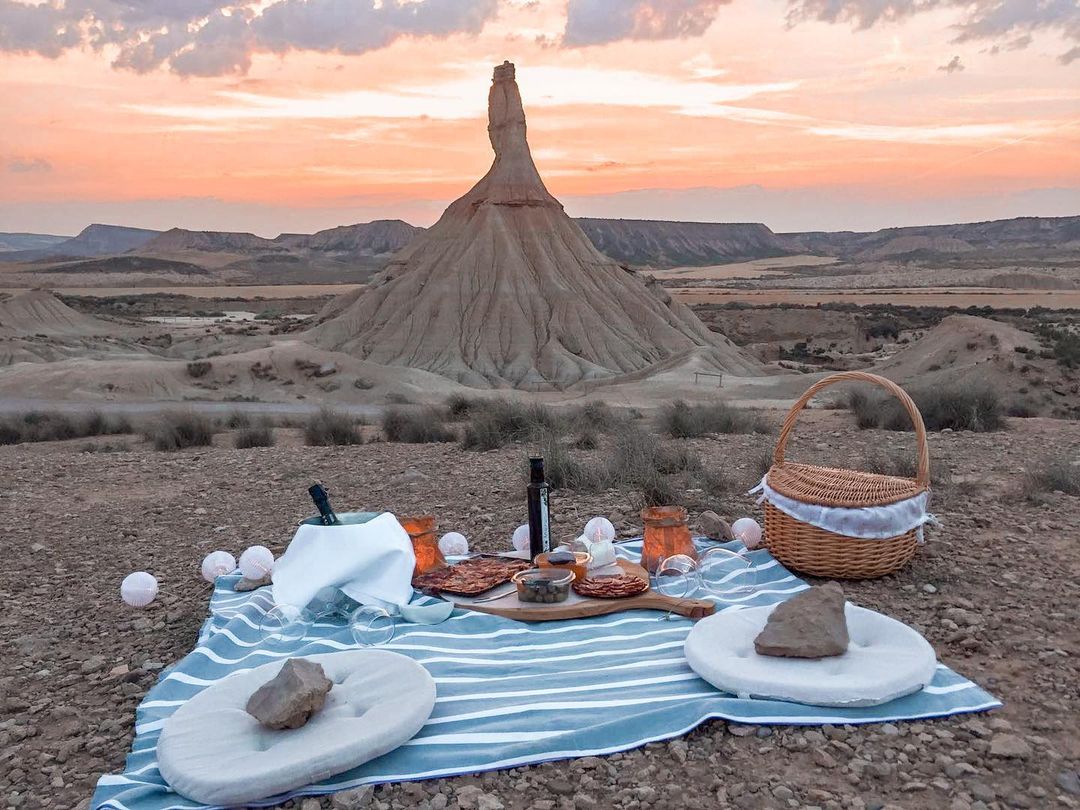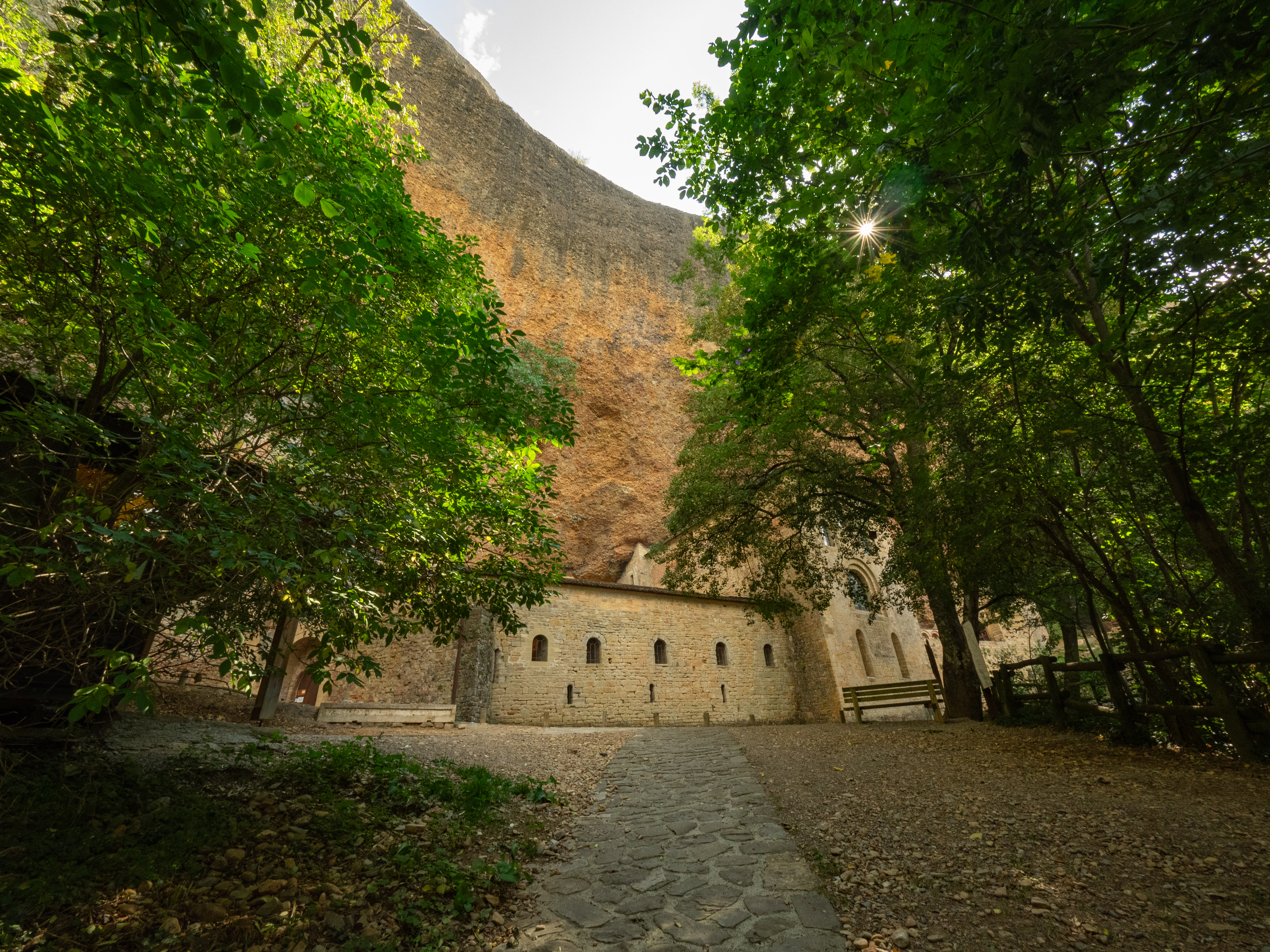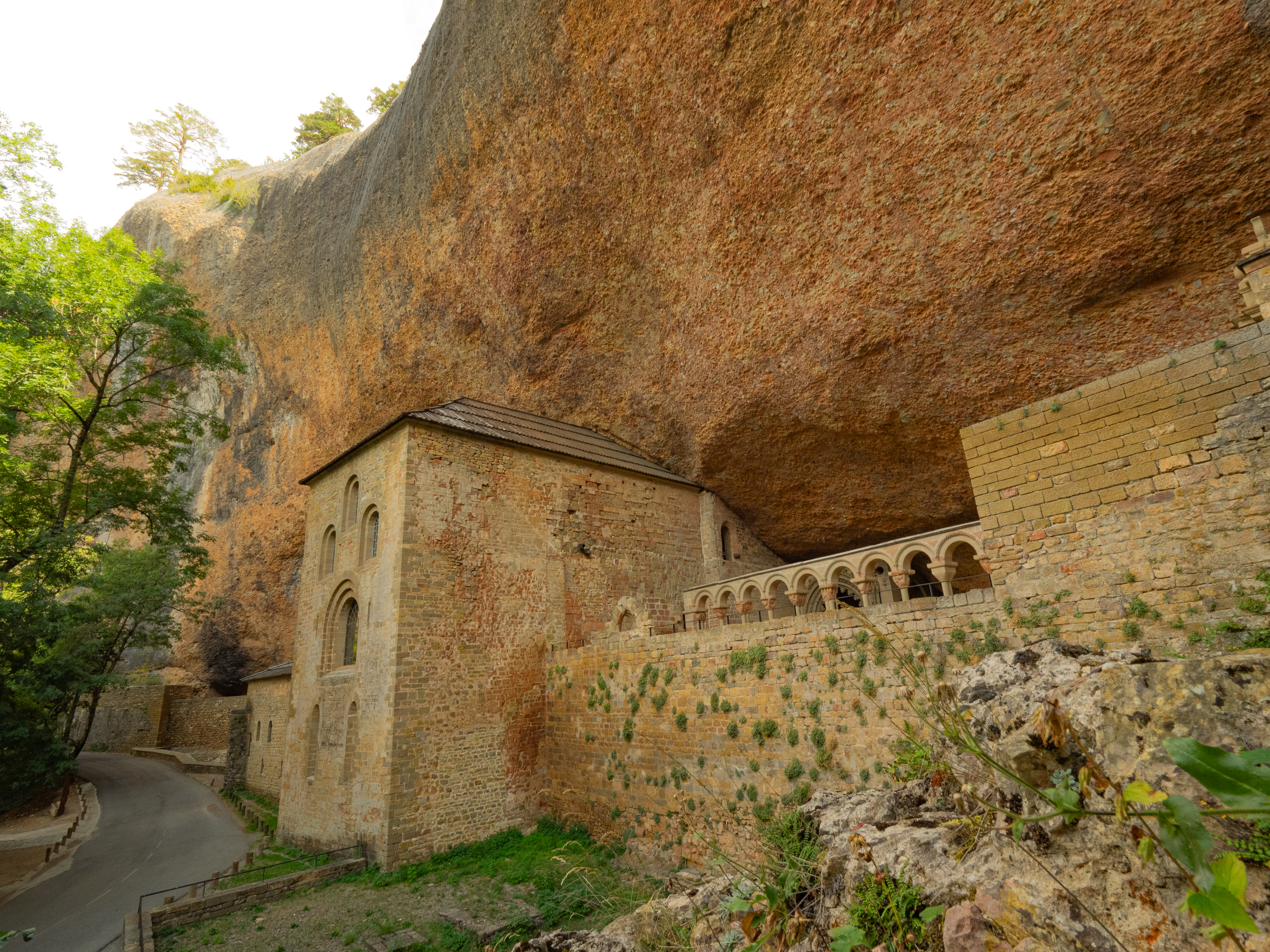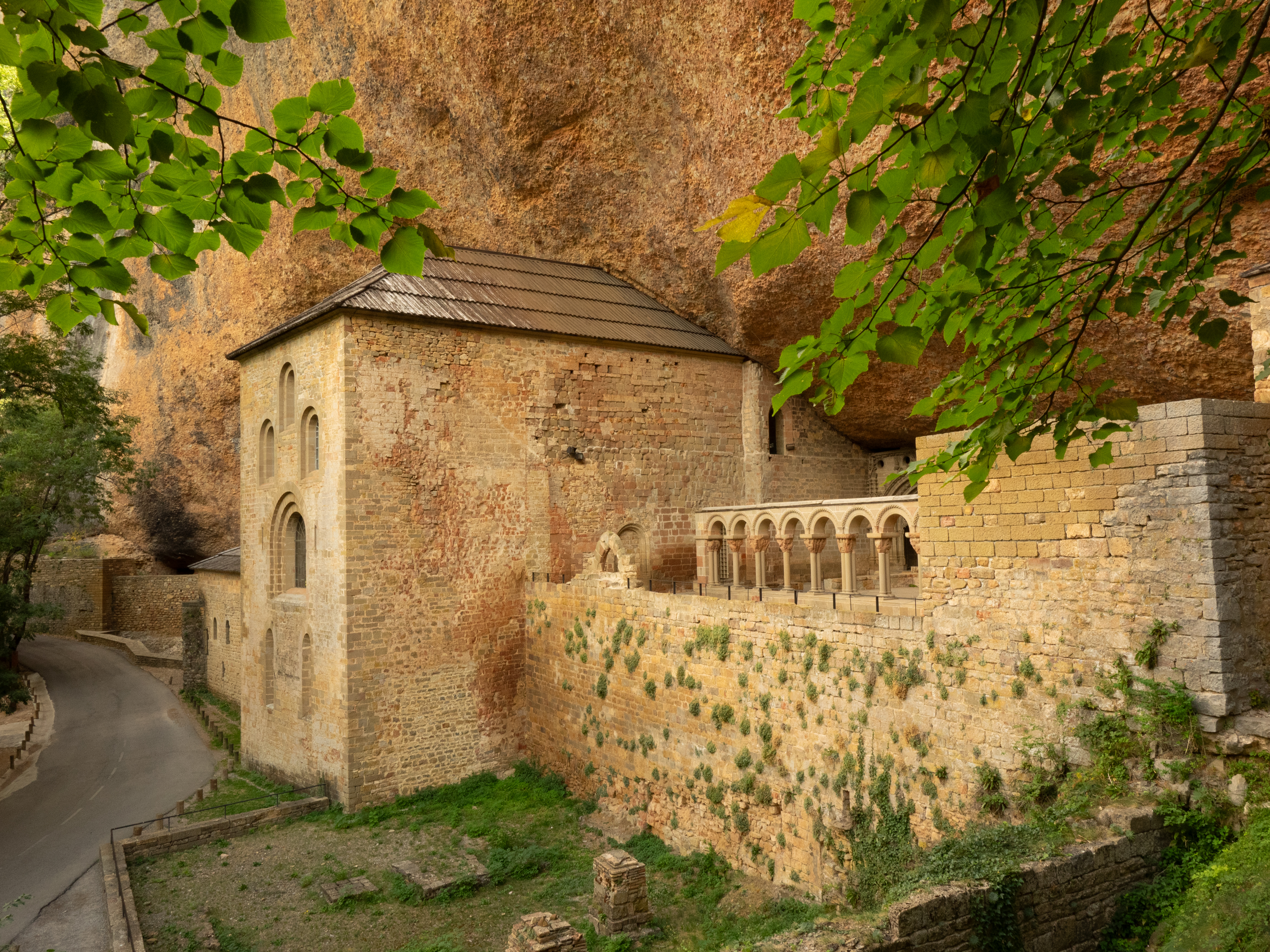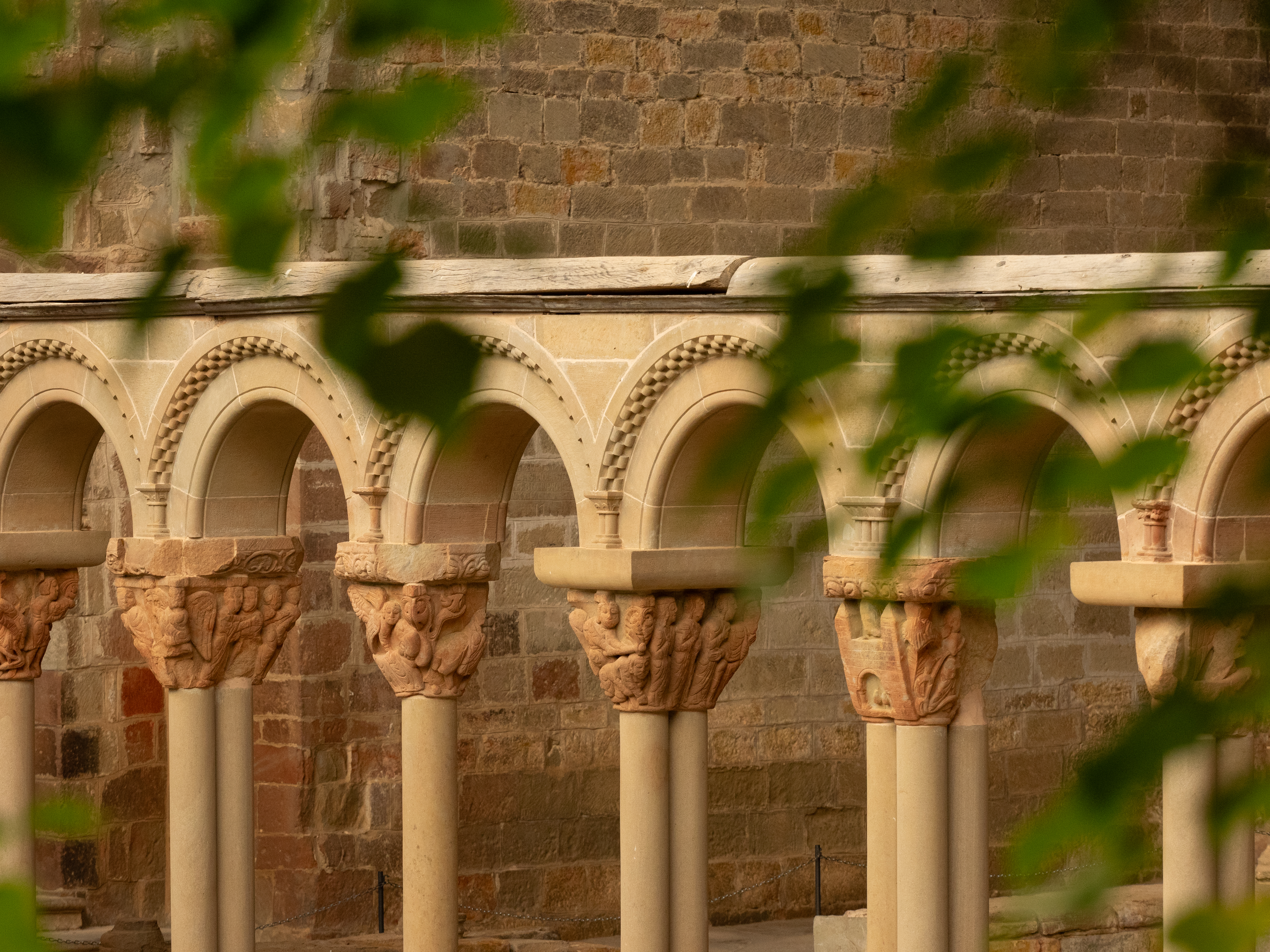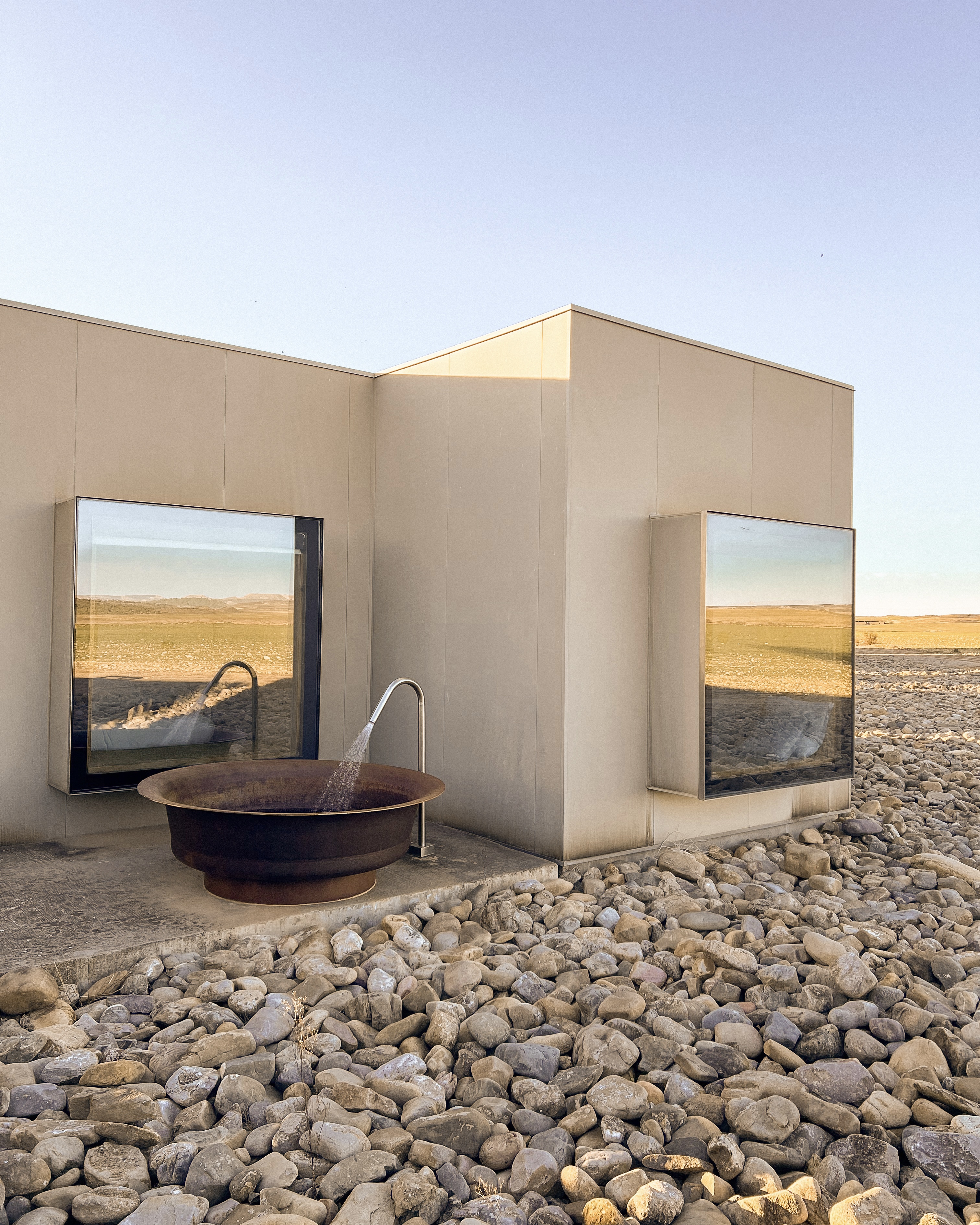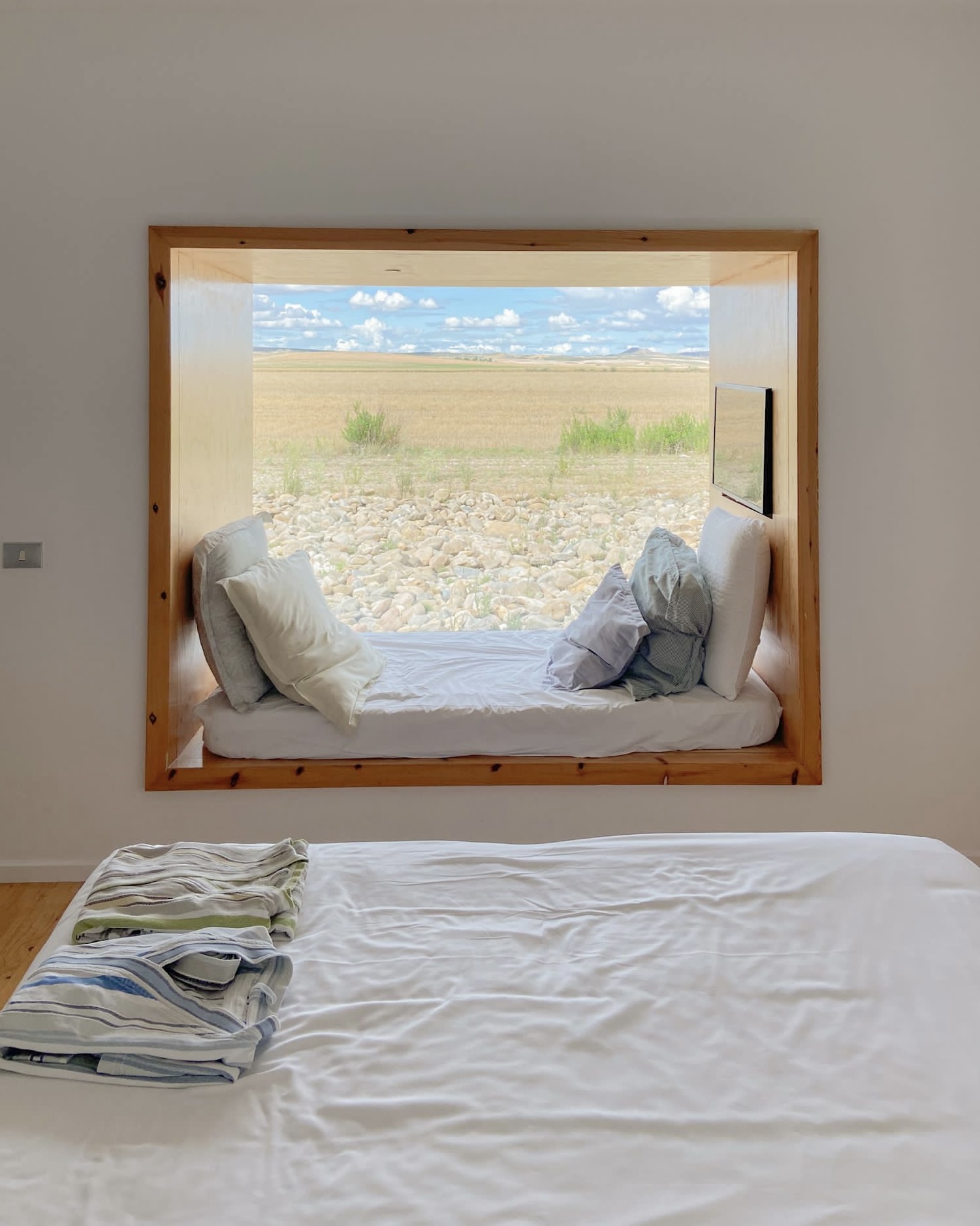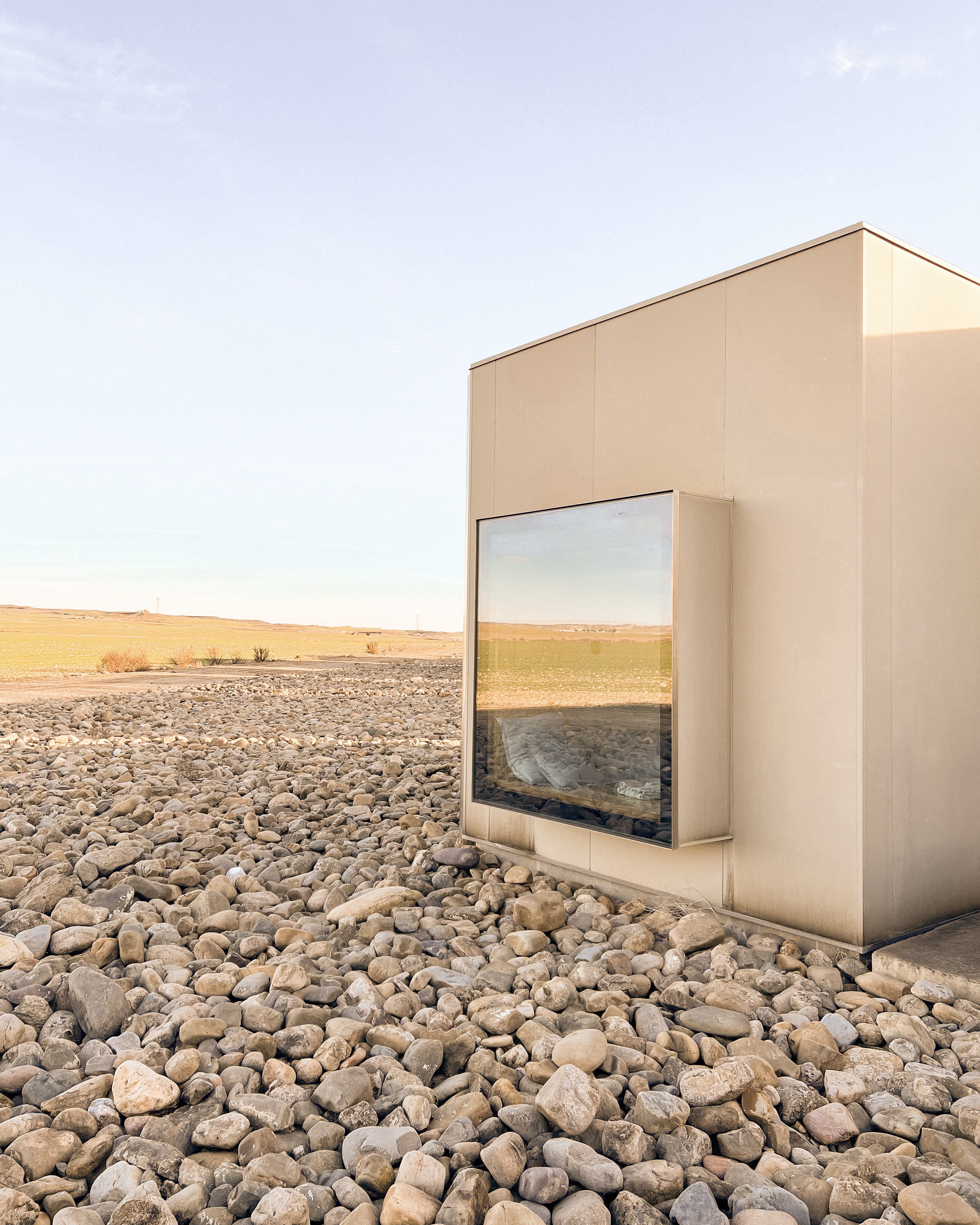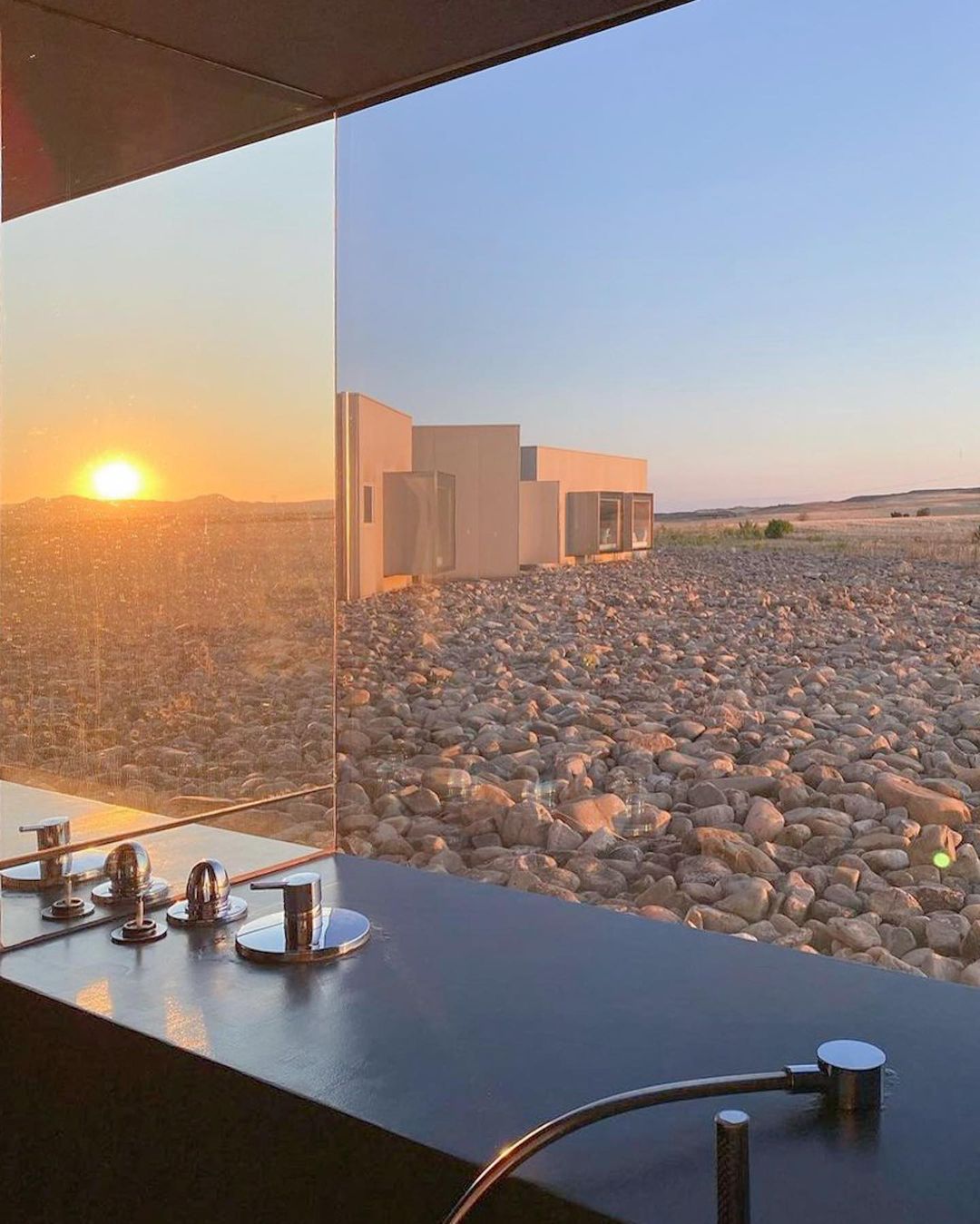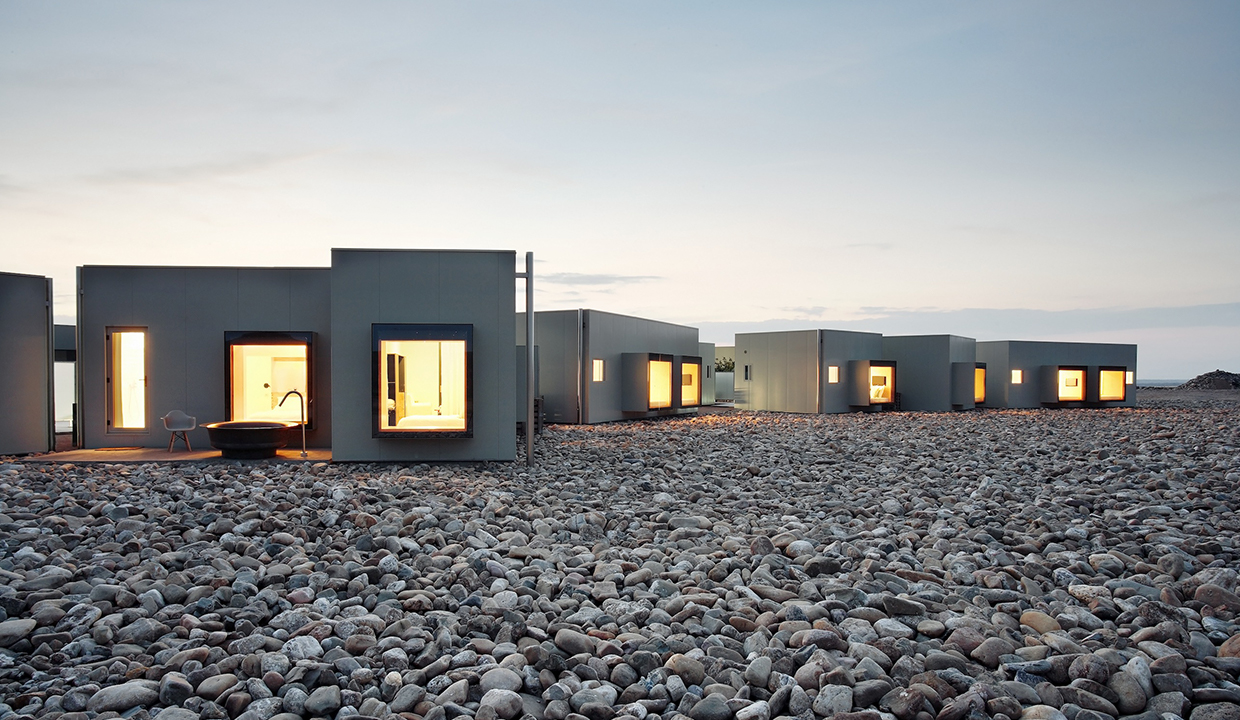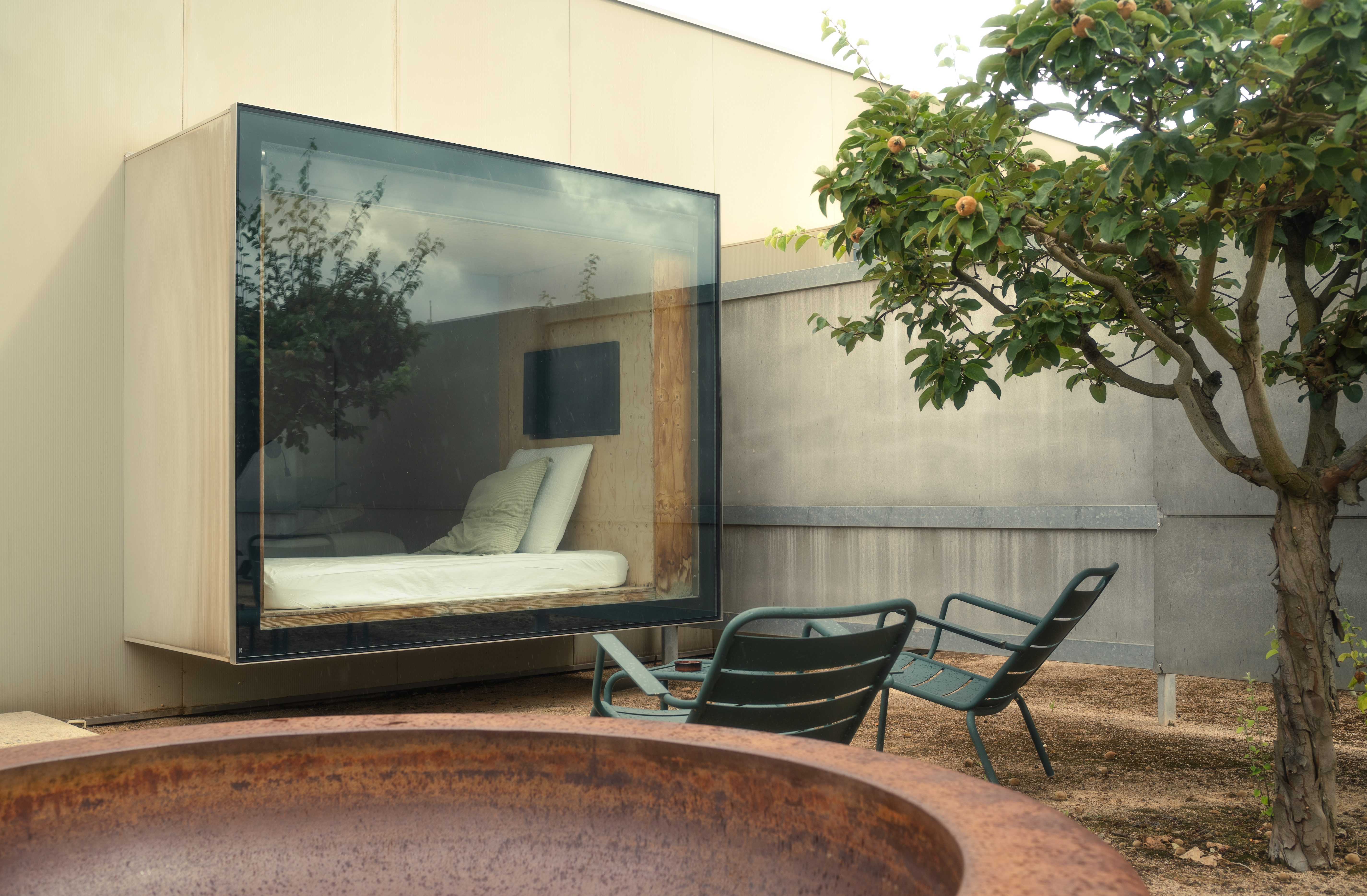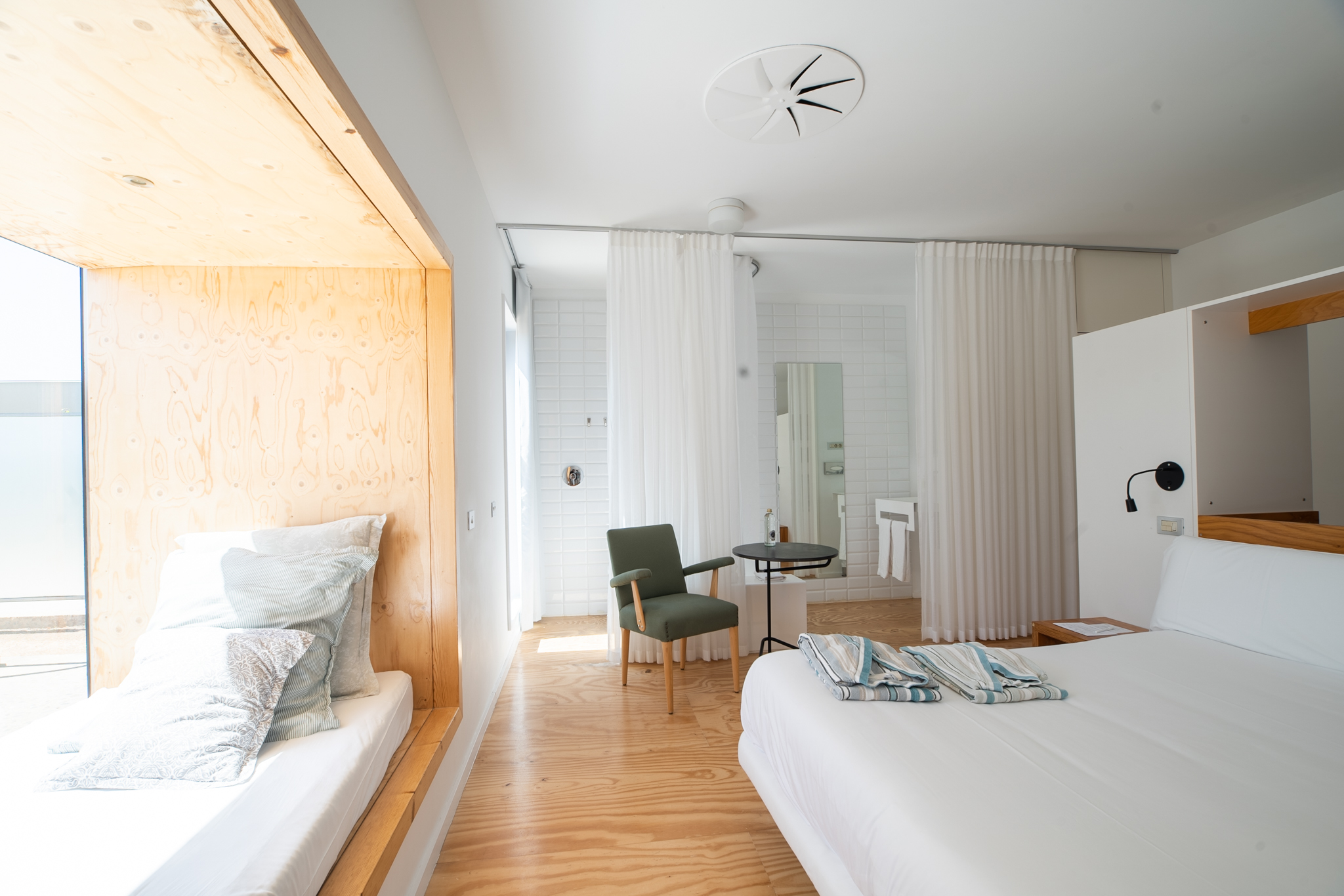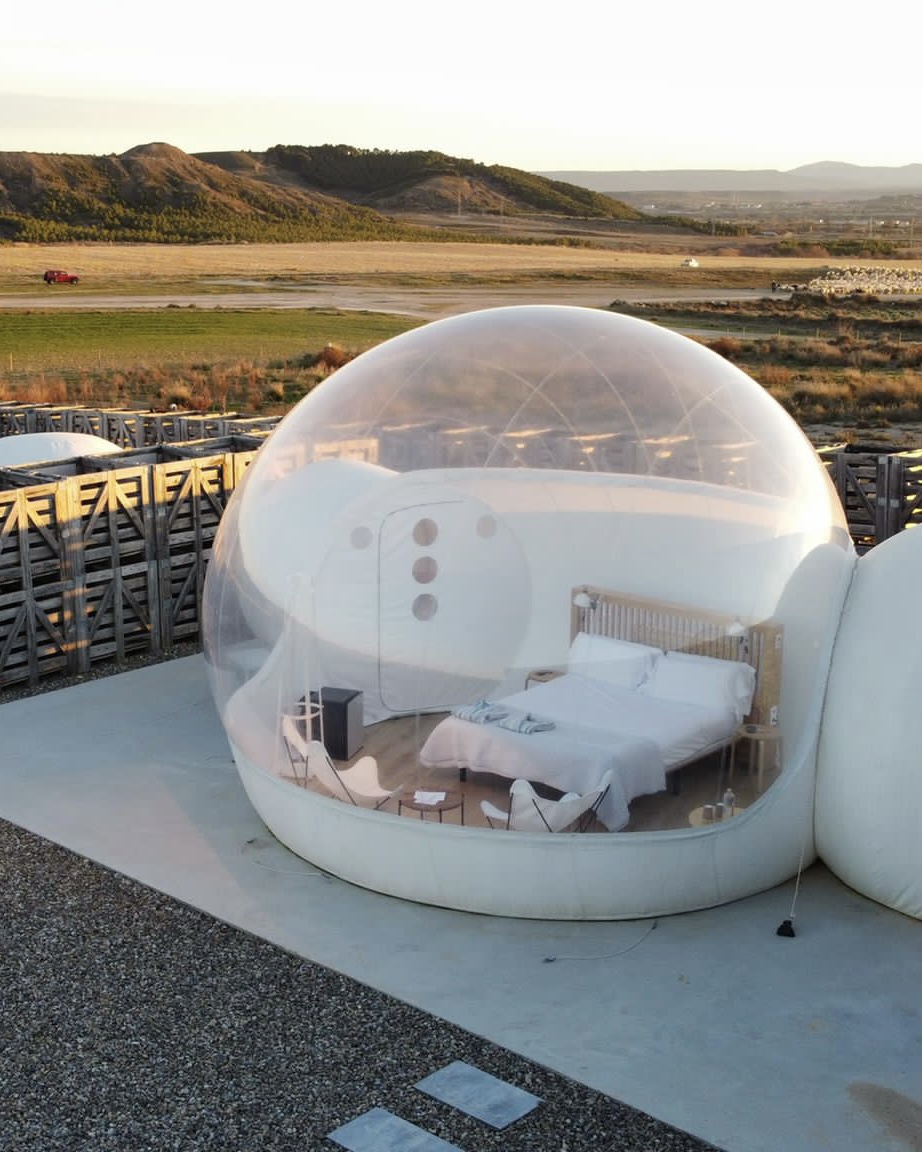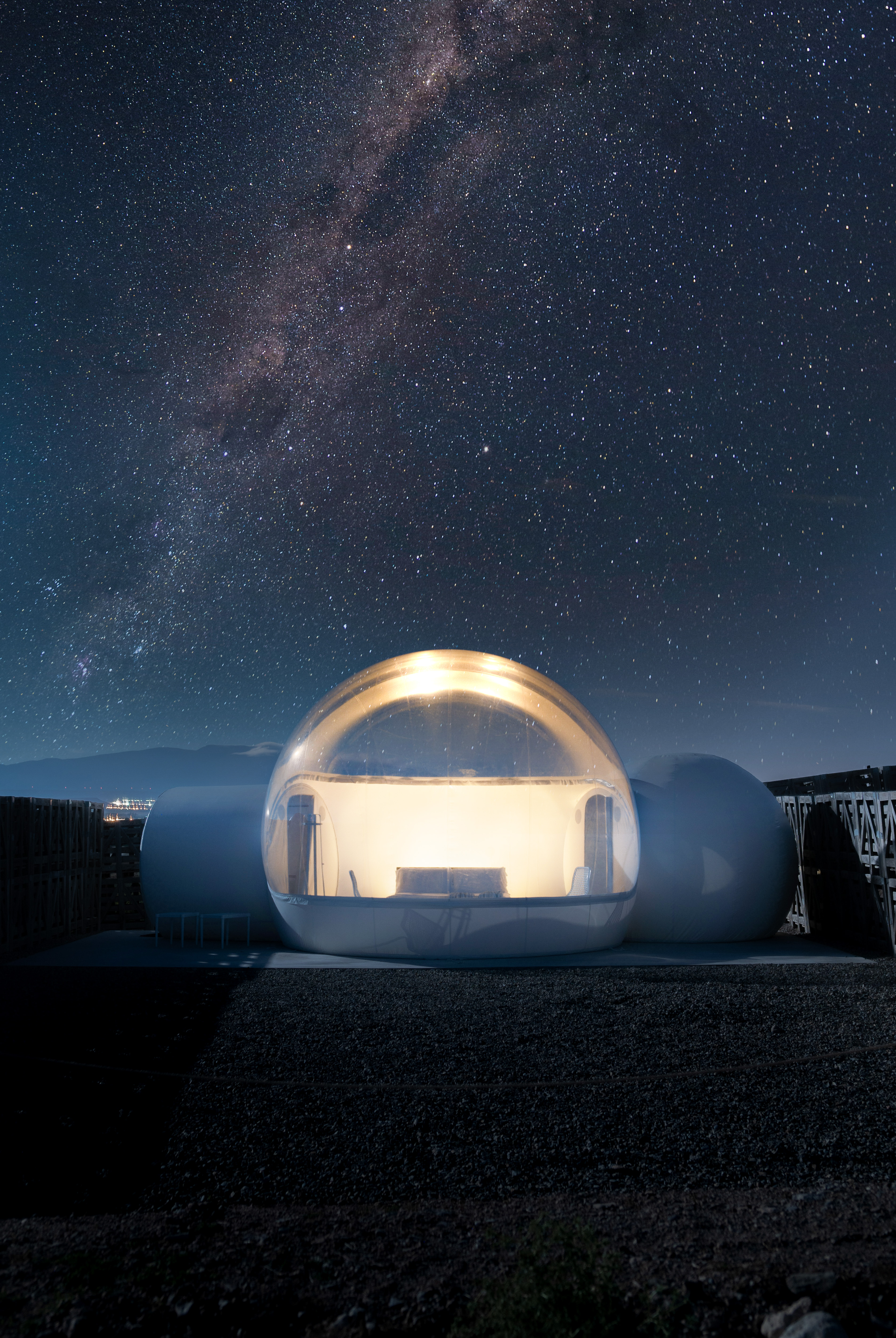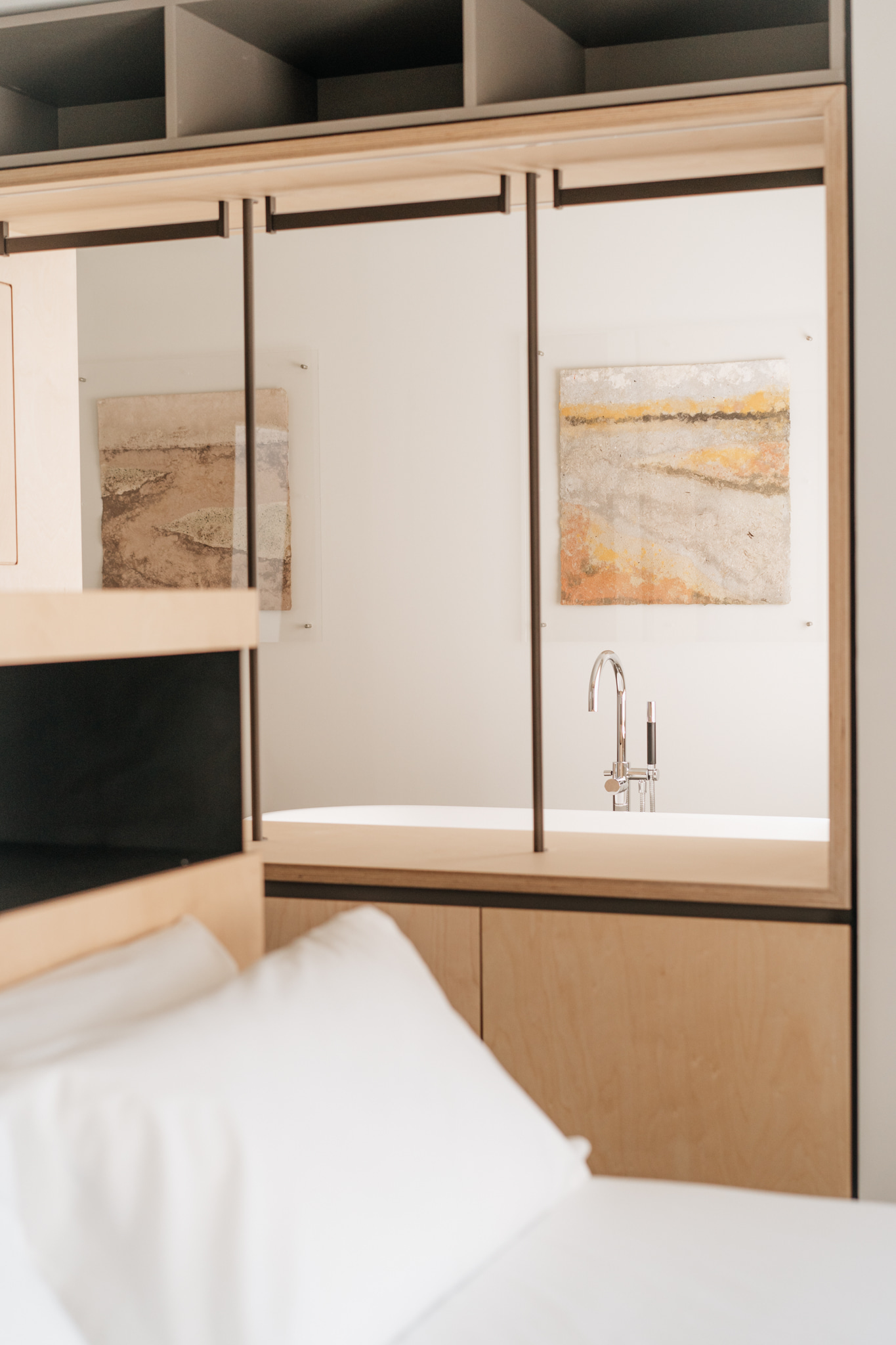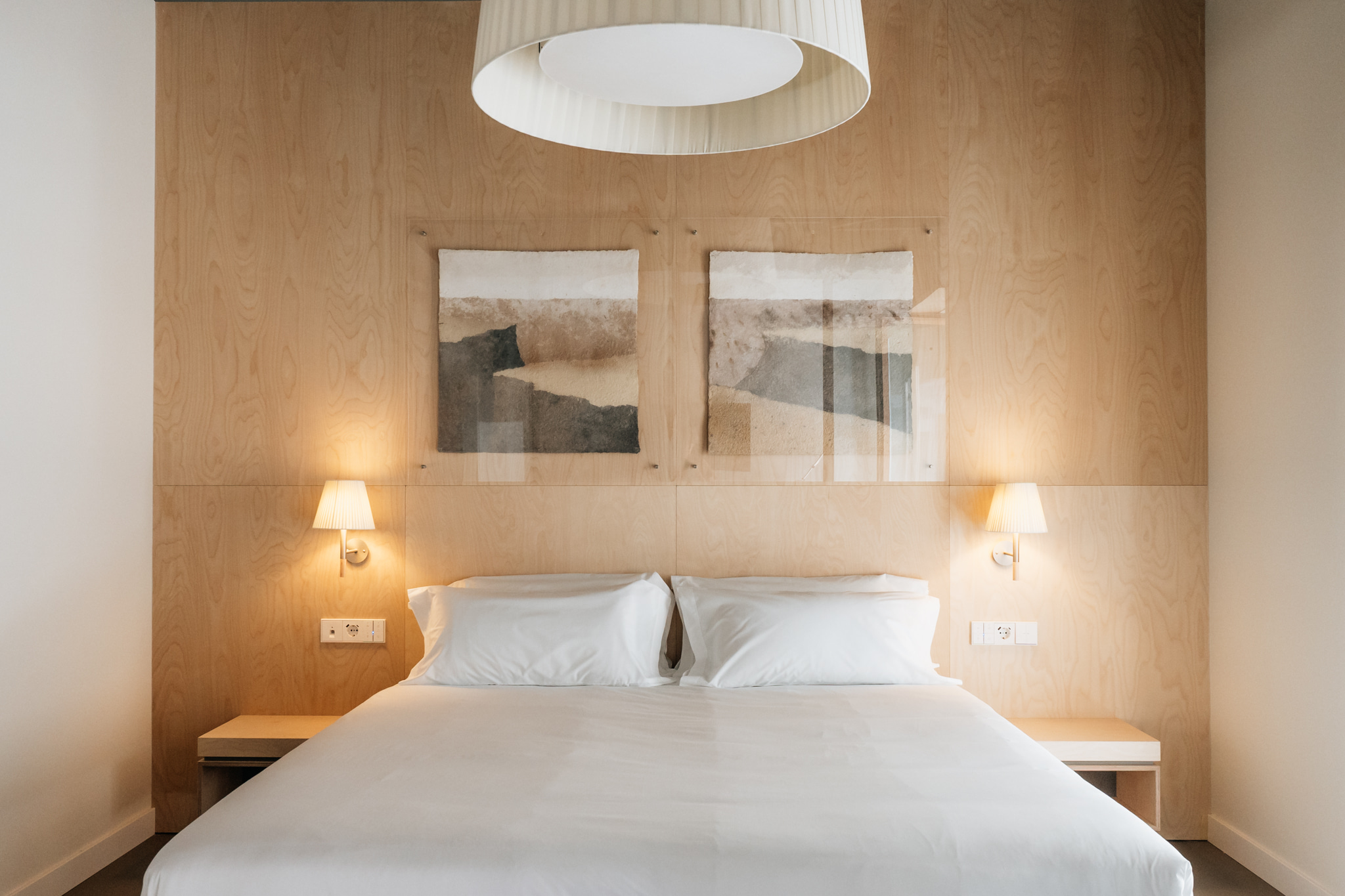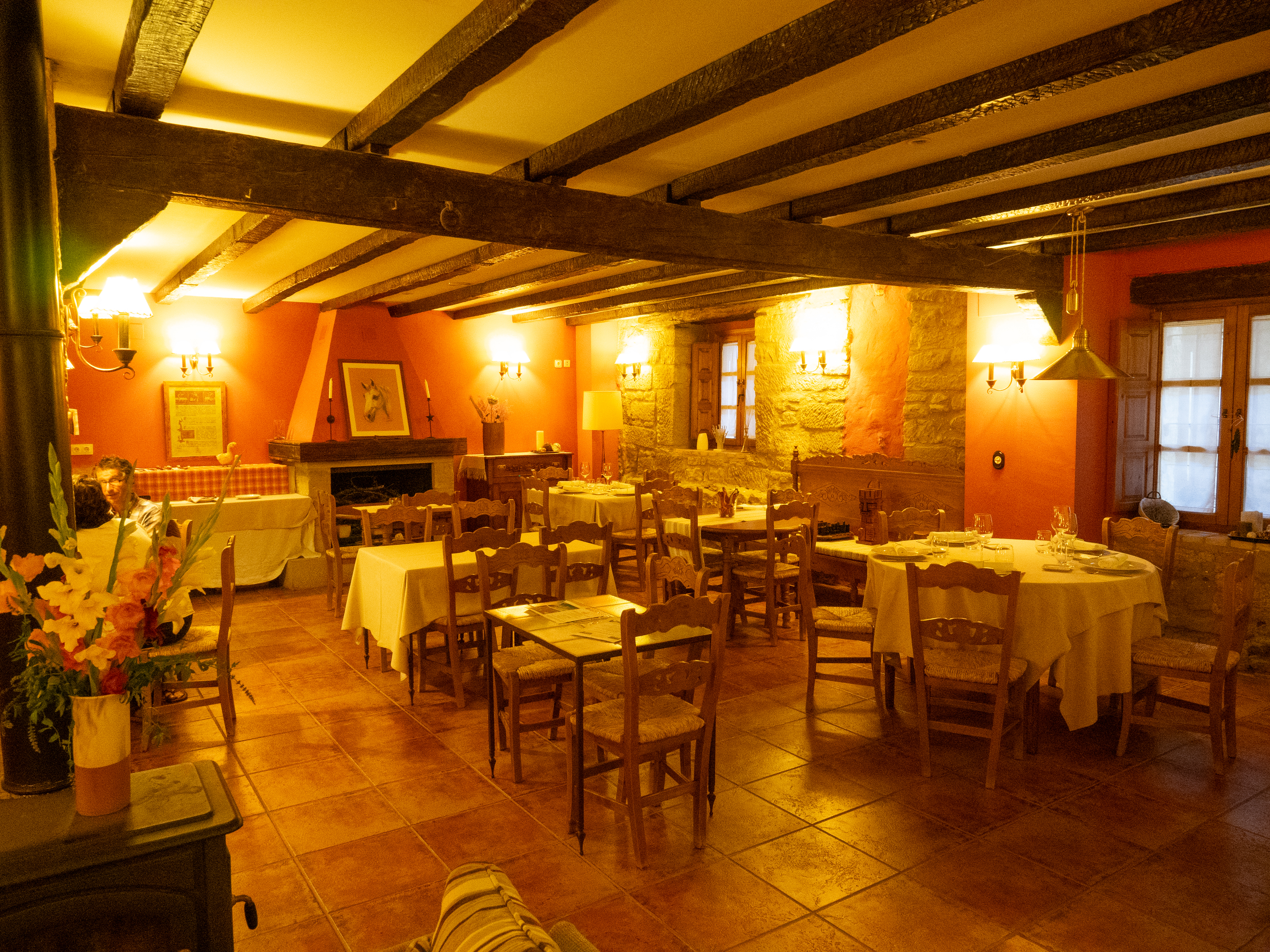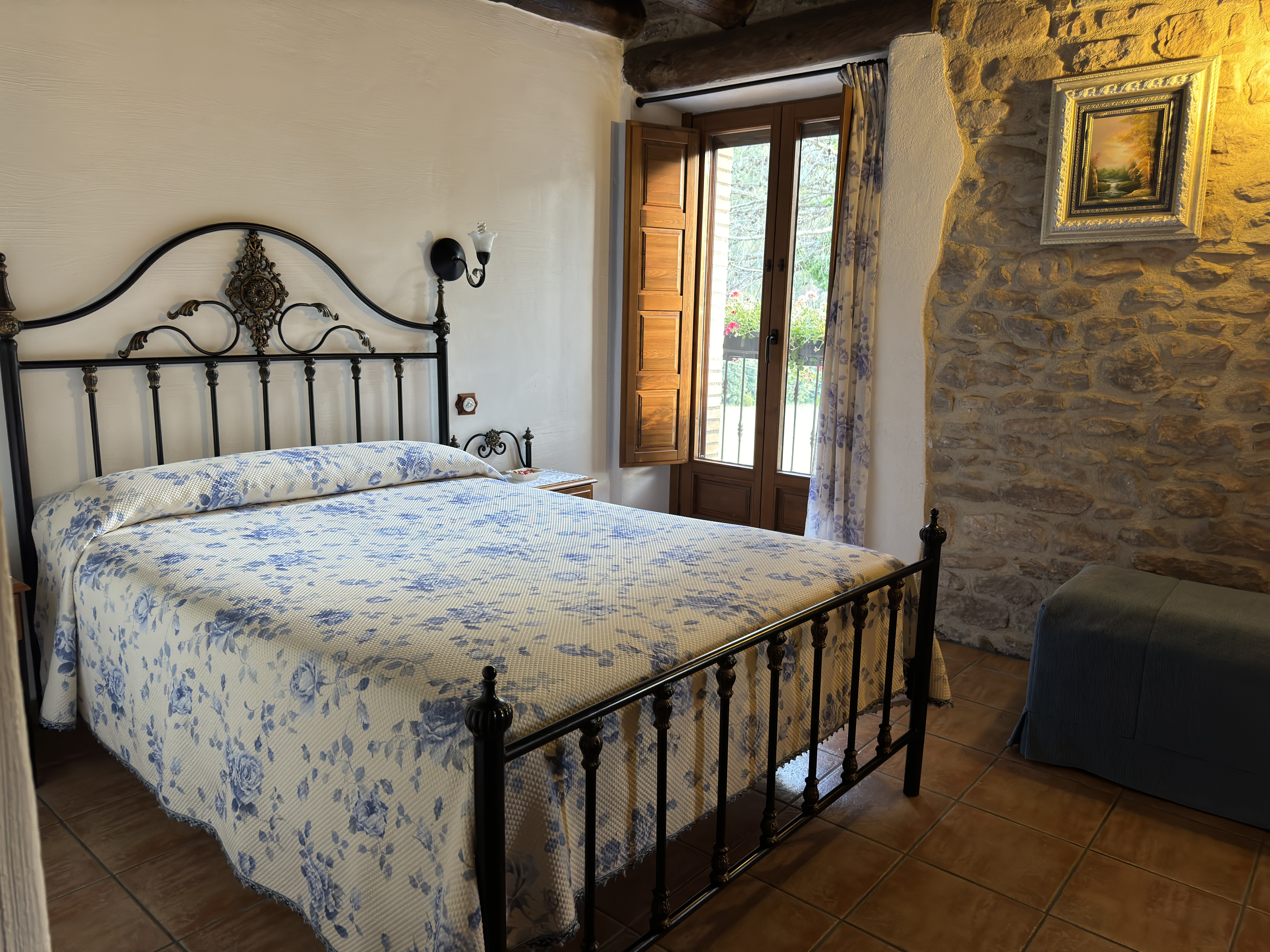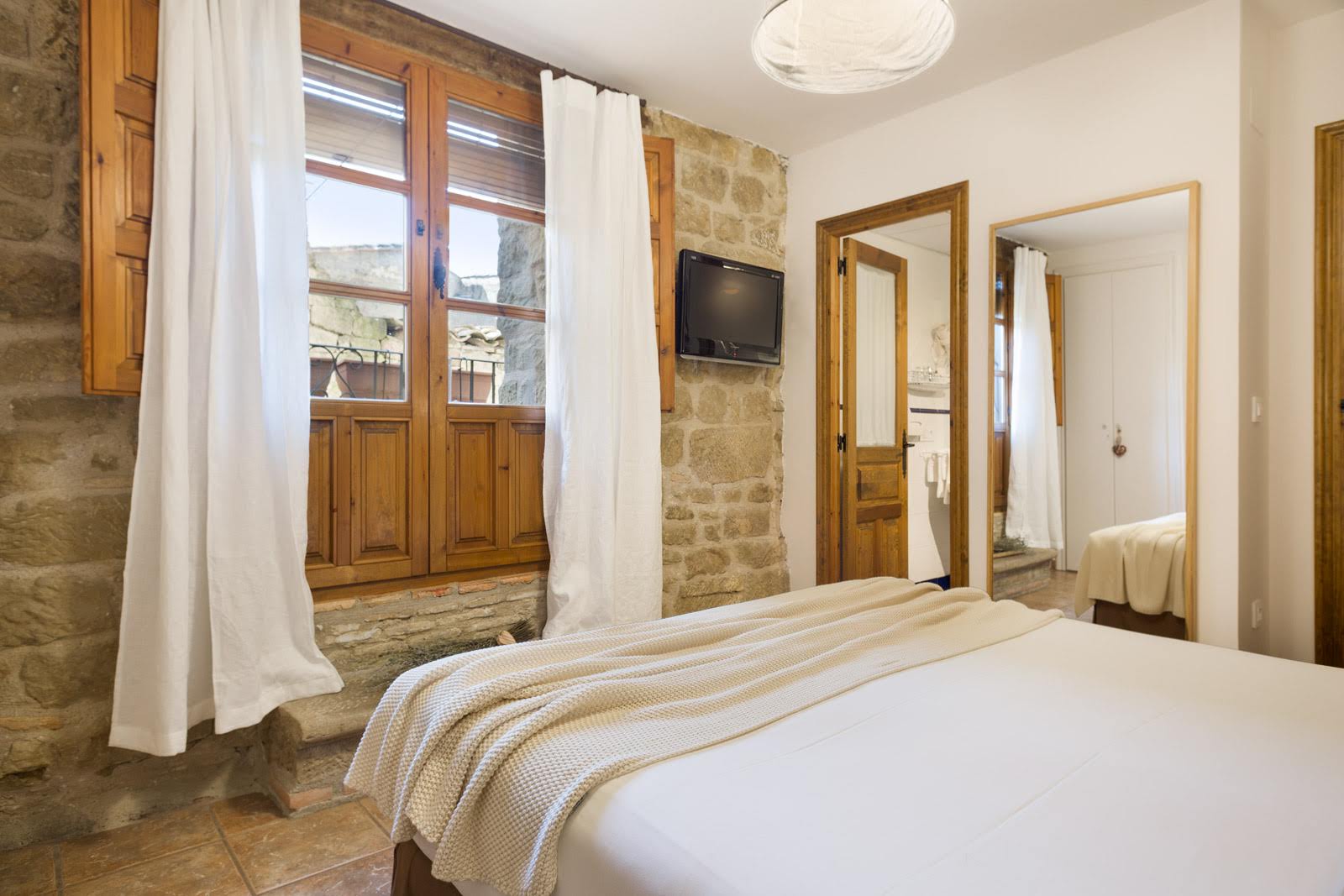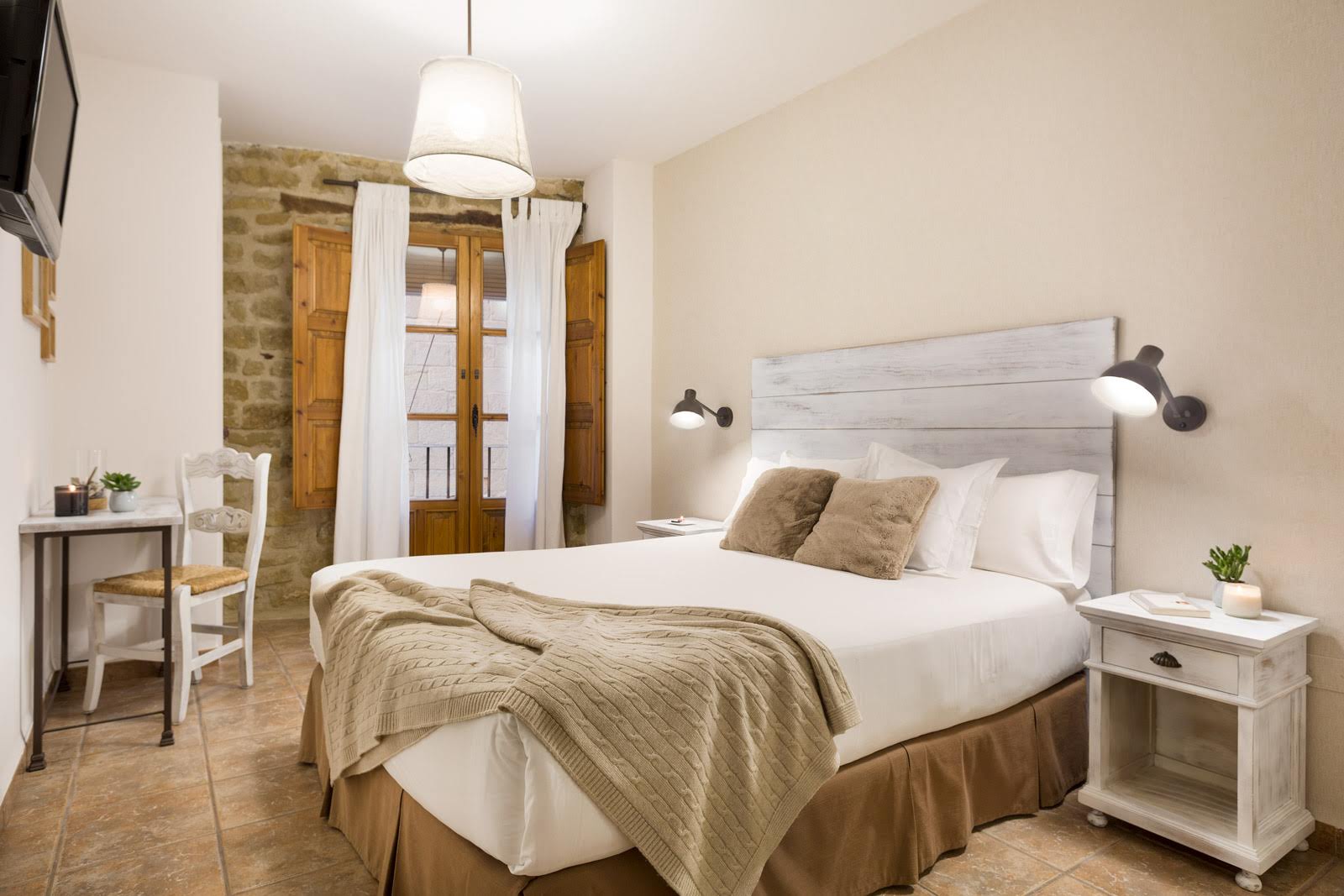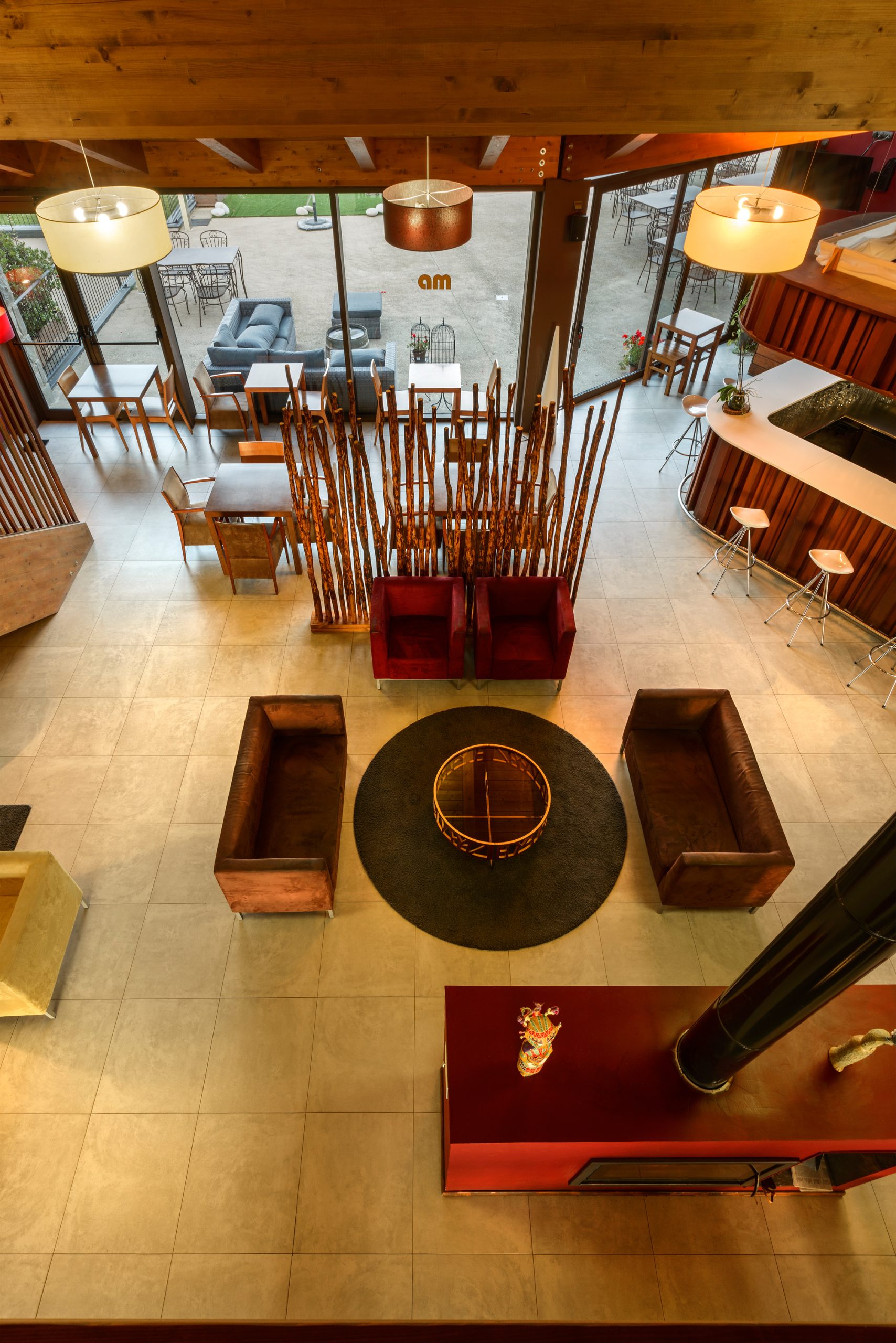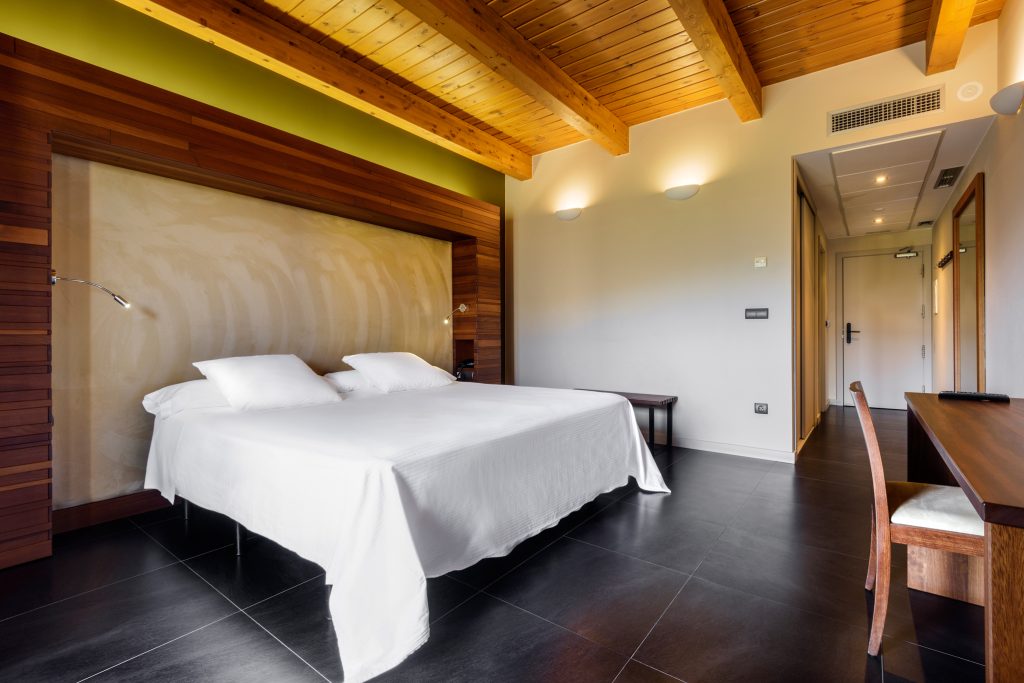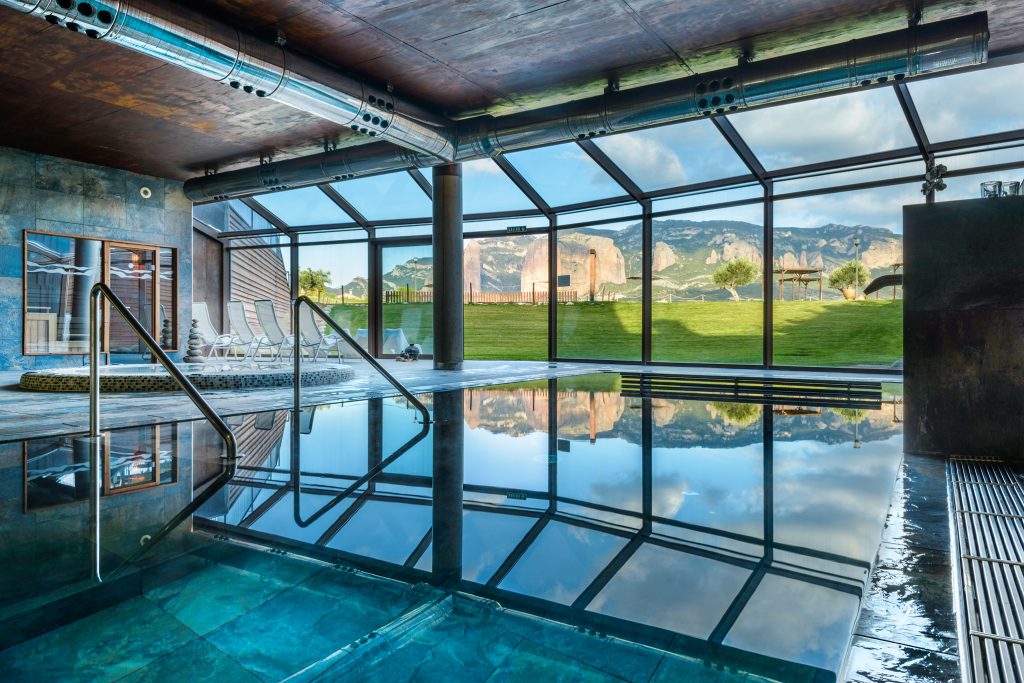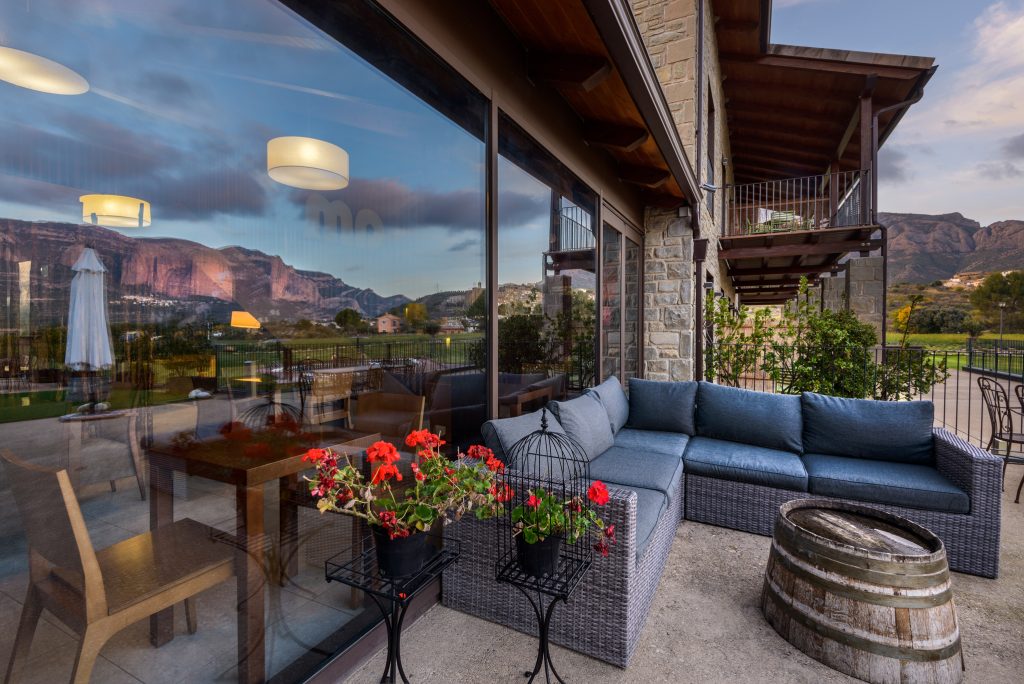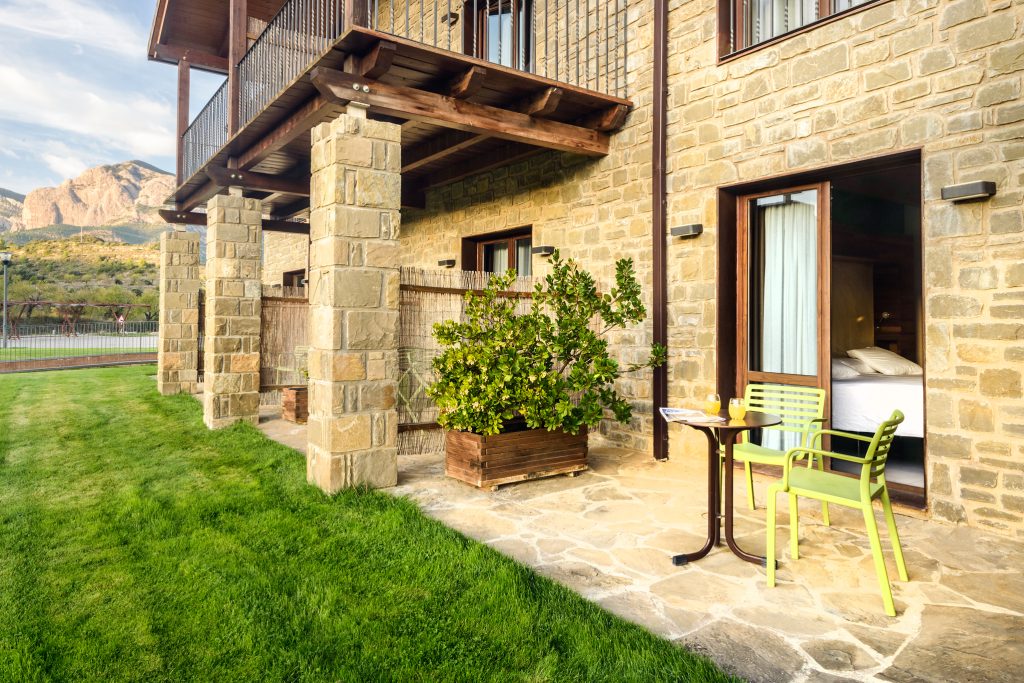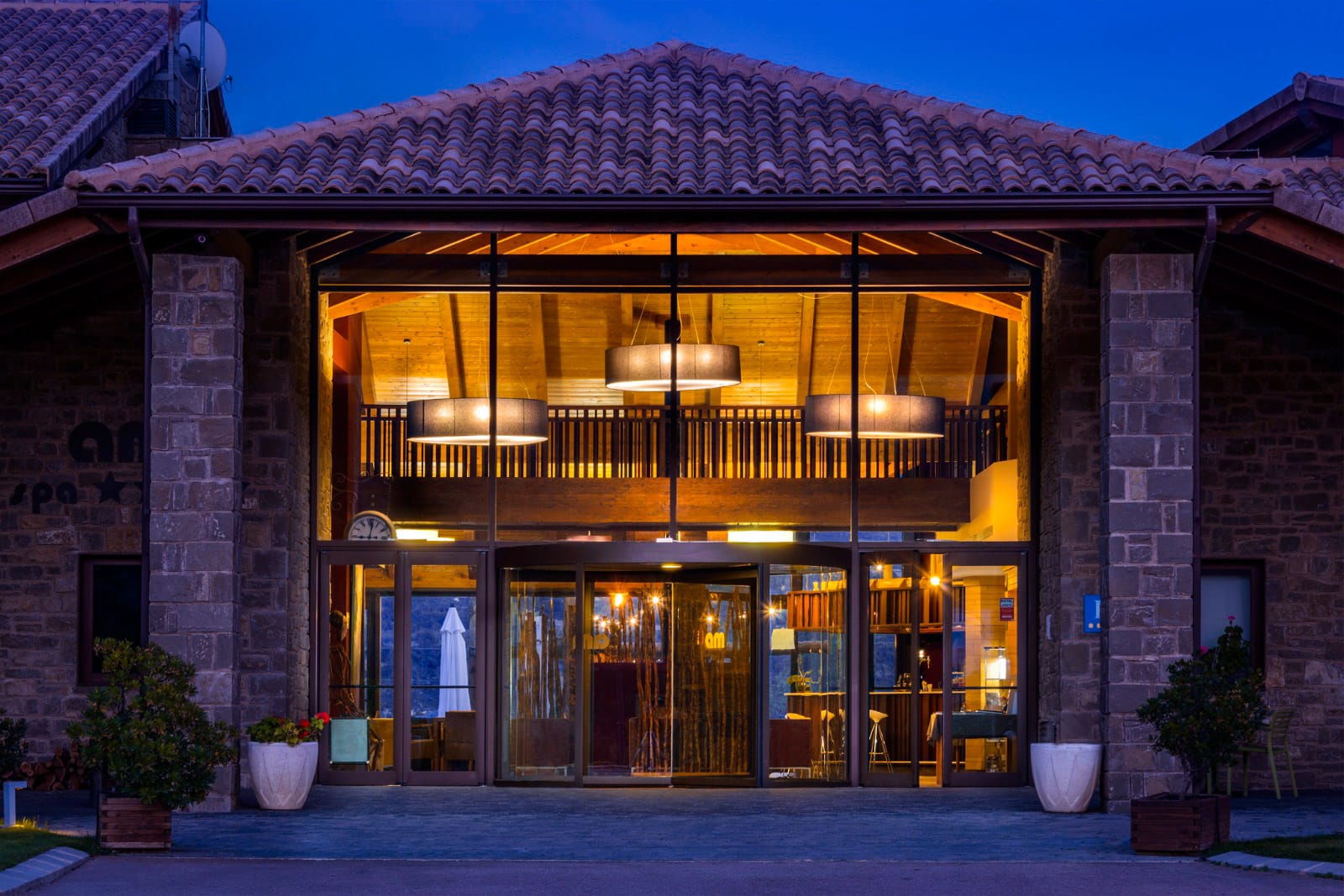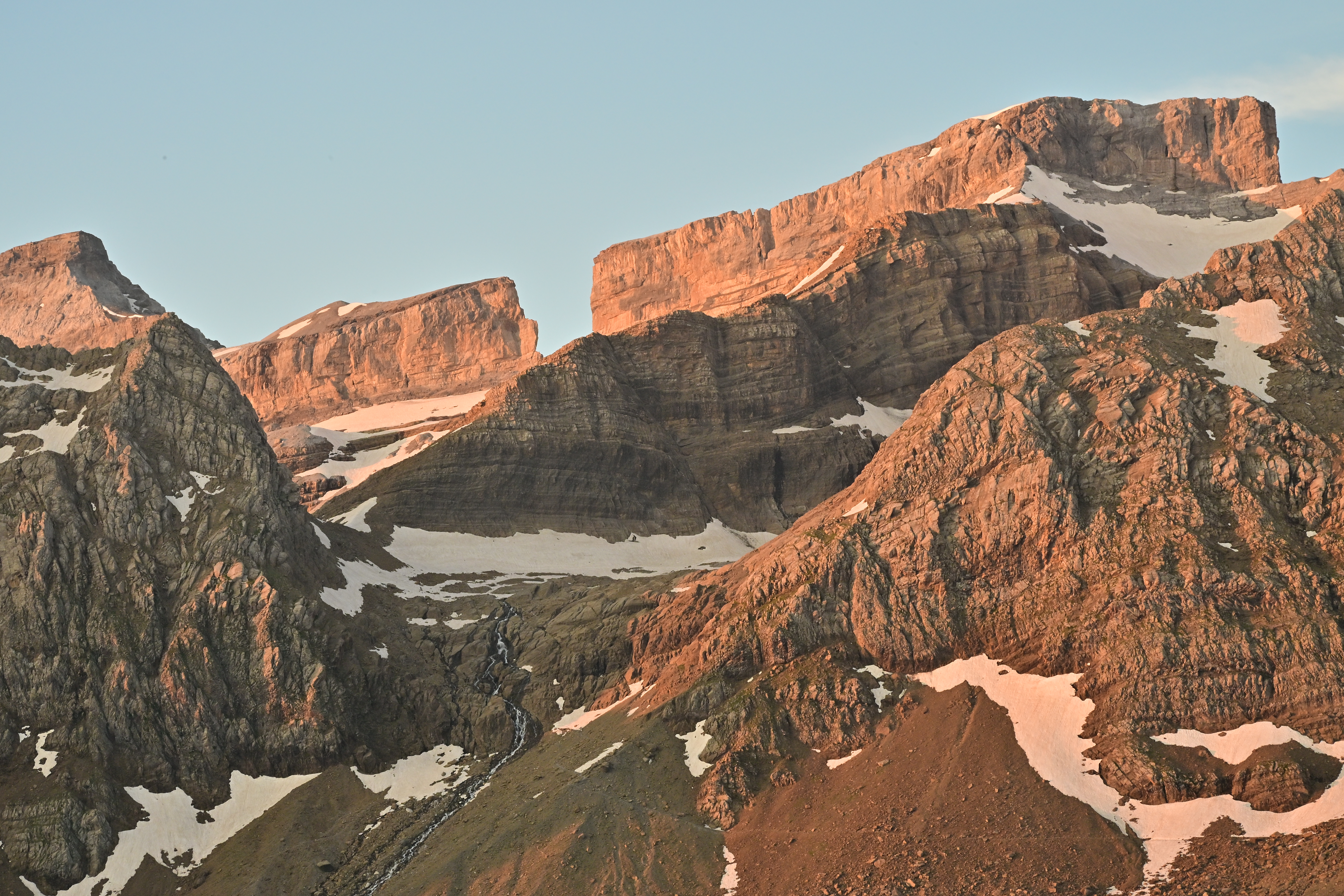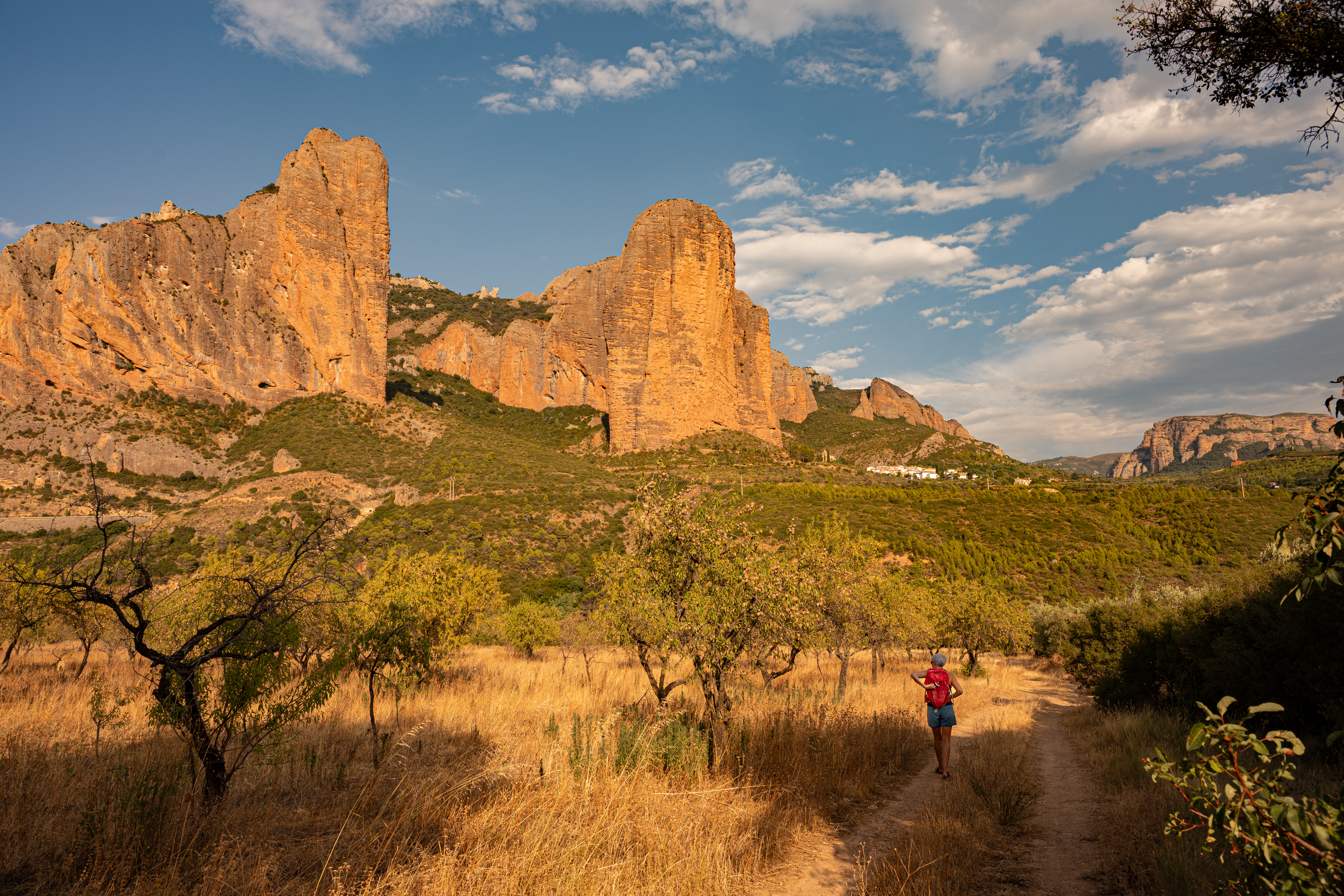
Start of the hike from Loarre (or optionally from Anies with a transfer to shorten the stage) through fields and terraced crops. A shaded ascent among pines, oaks, and fragrant rosemary. Discovery of the magnificent Hermitage of Virgen de la Peña (1150 m), nestled in the cliffside (on certain days, it is possible to visit the interior to admire its religious artworks). The trail overlooks the Huesca plain. The highlight of the day is the Loarre Castle-Abbey (11th century), one of the best-preserved Romanesque fortresses in Europe, which played a role in the reconquest of the Iberian Peninsula against the Muslims and, more recently, served as a filming location for Ridley Scott's Kingdom of Heaven.
The hike begins gently through hills, terraces, and groves of holm oaks towards Sarsamarcuello. Arrival at the Romanesque hermitage of San Miguel (994 m), offering a moving view of the ruins of Marcuello Castle. The trail leads to the Mirador de los Buitres (1049 m), revealing a breathtaking panorama of the Huesca plain and the Mallos de Riglos, impressive conglomerate rock formations. A shaded descent among pines, rosemary, and thyme leads to the Rio Gallego and its turquoise waters. End of the day in relaxation at the hotel-spa, perfect for soothing these intense aesthetic emotions.
Check-in for two consecutive nights at your hotel.
Hike around the Mallos de Riglos: these impressive red towers of conglomerate rock, rising to 952 m (Punta Mallafré), resemble giants frozen in the scrubland. The trail winds through their colorful walls, requiring effort and awe in front of impressionistic panoramas blending shadows and light. The hike invites you to dream of explorations and pays tribute to the courage of the first climbers. A shaded stop at the Roseta refuge (1019 m) for a well-deserved picnic, followed by a descent offering spectacular views of the Mallos, the scrubland, and the turquoise ribbon of the Rio Gallego.
Hike through the Sierra de Santo Domingo: the trail crosses heathlands, scrubland, and groves before reaching the imposing Mallos de Aguero, resembling immense frozen statues and other giant phalluses. The ascent leads to a long and magnificent limestone ridge offering a panoramic view of the Pyrenees. The descent follows the valley of the Rio Asabón, passing the ruins of Salinas Viejo, once prosperous due to its salty spring but abandoned after a landslide. Passing by a charming fountain and the impressive breach of the Foz de Salina – a vulture refuge – gradually brings you back to the present, concluding this timeless journey.
On the journey between Riglos and the Bardenas, take a break for a walk in the Aguarales de Valpalmas: this mini-desert with lunar-like landscapes reveals its badlands sculpted by erosion, dotted with fairy chimneys topped with sandstone. The road continues towards the Bardenas Reales, where the scale changes dramatically: the formations rise up to 150 m in height, offering spectacular panoramas worthy of grand westerns. This desert inspired filmmakers like Buñuel, Welles, and Gilliam, but none could finish their adaptation of Don Quixote, creating a curse around this project. Between dream and reality, the Castil de Tierra, the symbol of the Bardenas, seems to harbor timeless legends. A loop around the Castil de Tierra.
Before checking into your hotel, enjoy a visit and tasting at an organic olive oil producer and almond grower.
Day dedicated to the Bardenas Desert: this unique site has restricted access. However, you will be able to explore it through this hike to Tripa Azul, a slightly off-center summit offering an exceptional panoramic view of the desert. From this point, you will admire El Plano, a preserved agricultural plateau, and the imposing formations of Rallon and Ralla, reminiscent of the landscapes of Utah and classic Western movie sets. You will then continue on the road to visit the medieval village of Uncastillo, a true Romanesque gem with its castle, seven churches, and the Center for Religious Art of the Pyrenees.
Departure from Uncastillo, whose timeless charm and the elegance of its places will have enchanted you. Likely similar to the medieval village of Sos del Rey Católico and the Monastery of Leyre, along your route, which will be an ideal excuse for a stop between the 2 hours of driving that separate you from your final hike. Indeed, upon reaching the village of Santa Cruz de la Seroz, a loop to the cave monastery of San Juan de la Peña awaits you. Nestled beneath an immense limestone arch, this architectural gem combines a Mozarabic church (10th century), an upper church (11th century), a cloister (12th century), and the royal pantheon of Aragon, offering a unique blend of nature, medieval art, and spirituality. The panorama over the Pyrenees, as well as the sierras discovered on the previous days, will complete your enchantment on this timeless journey!
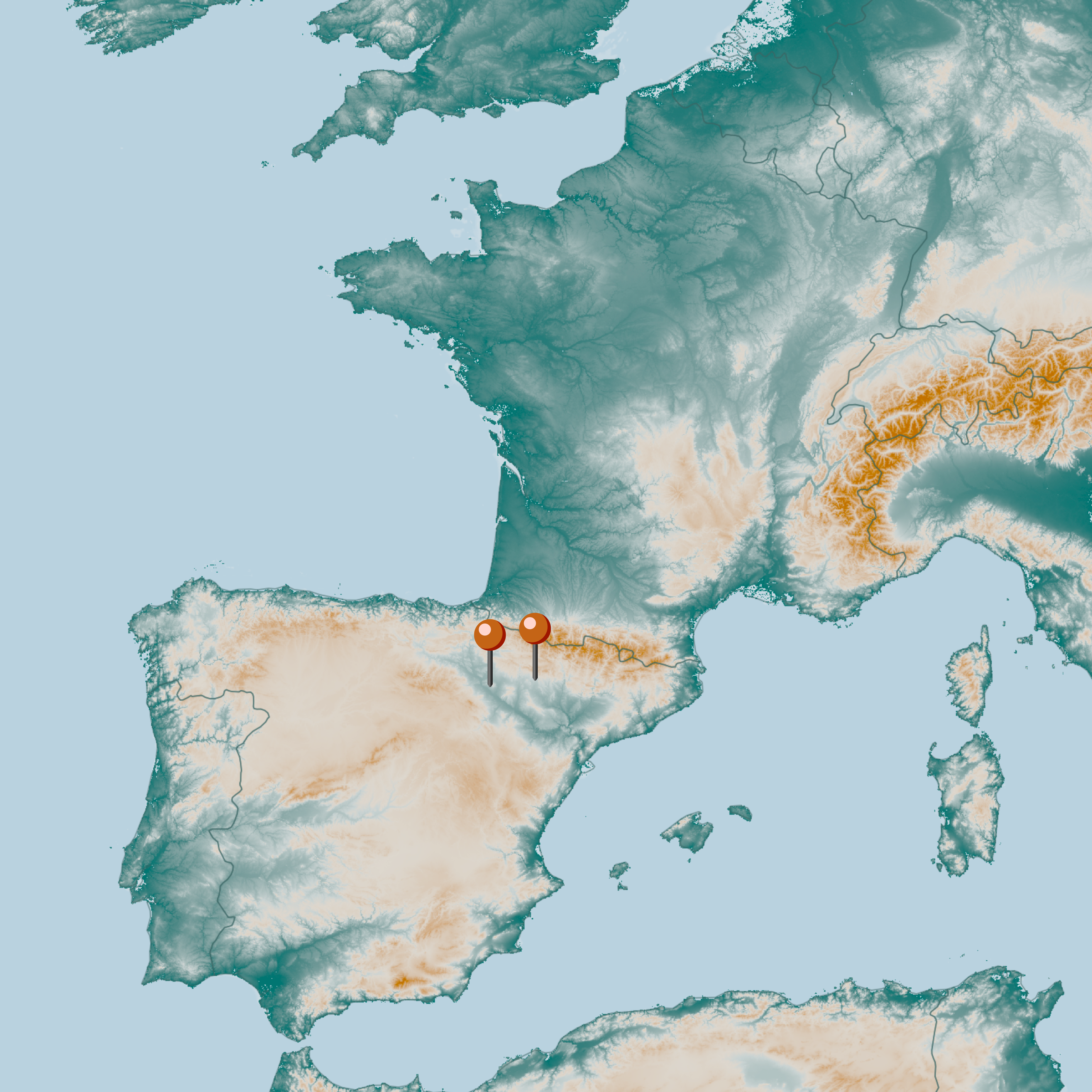
 FR
FR EN
EN